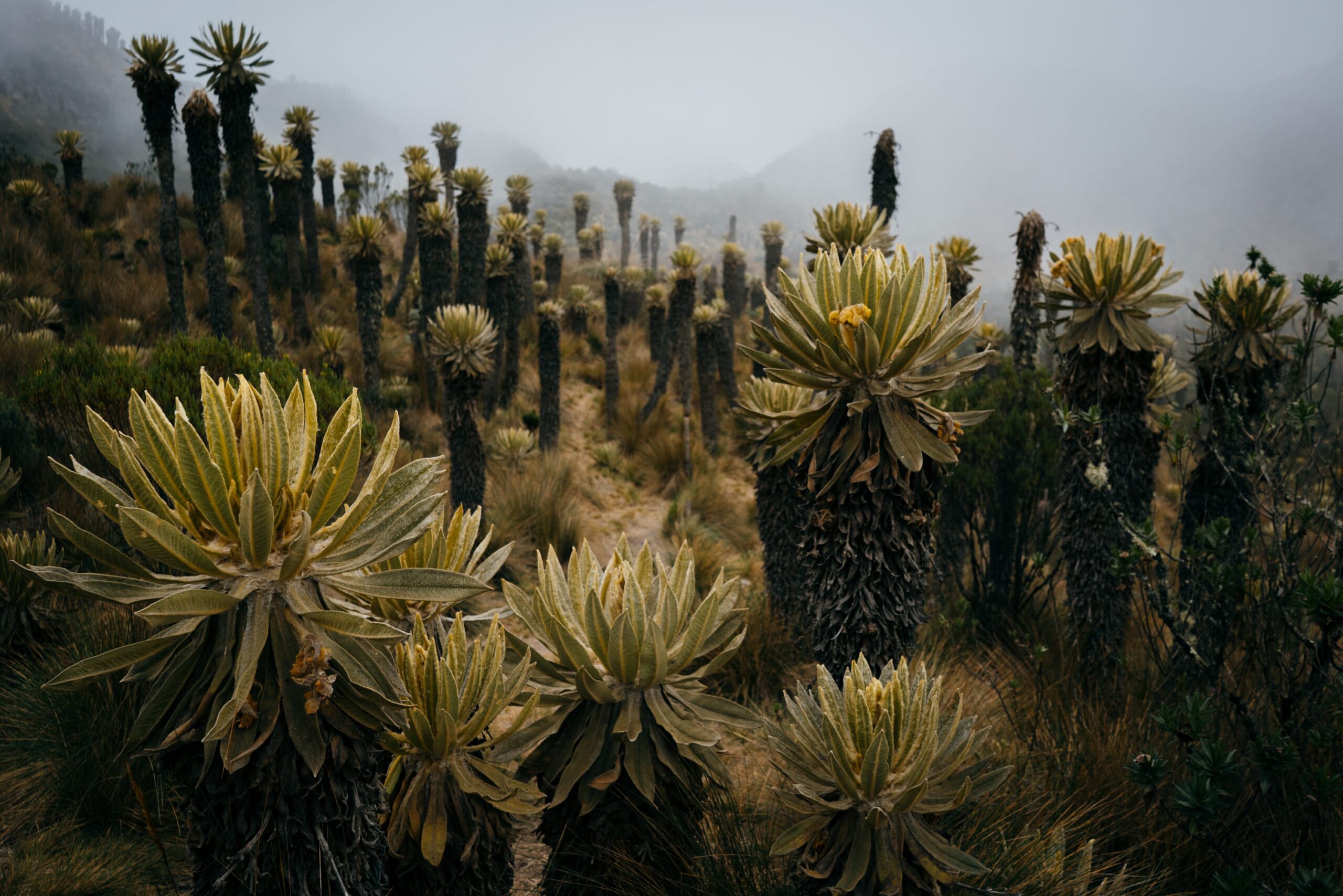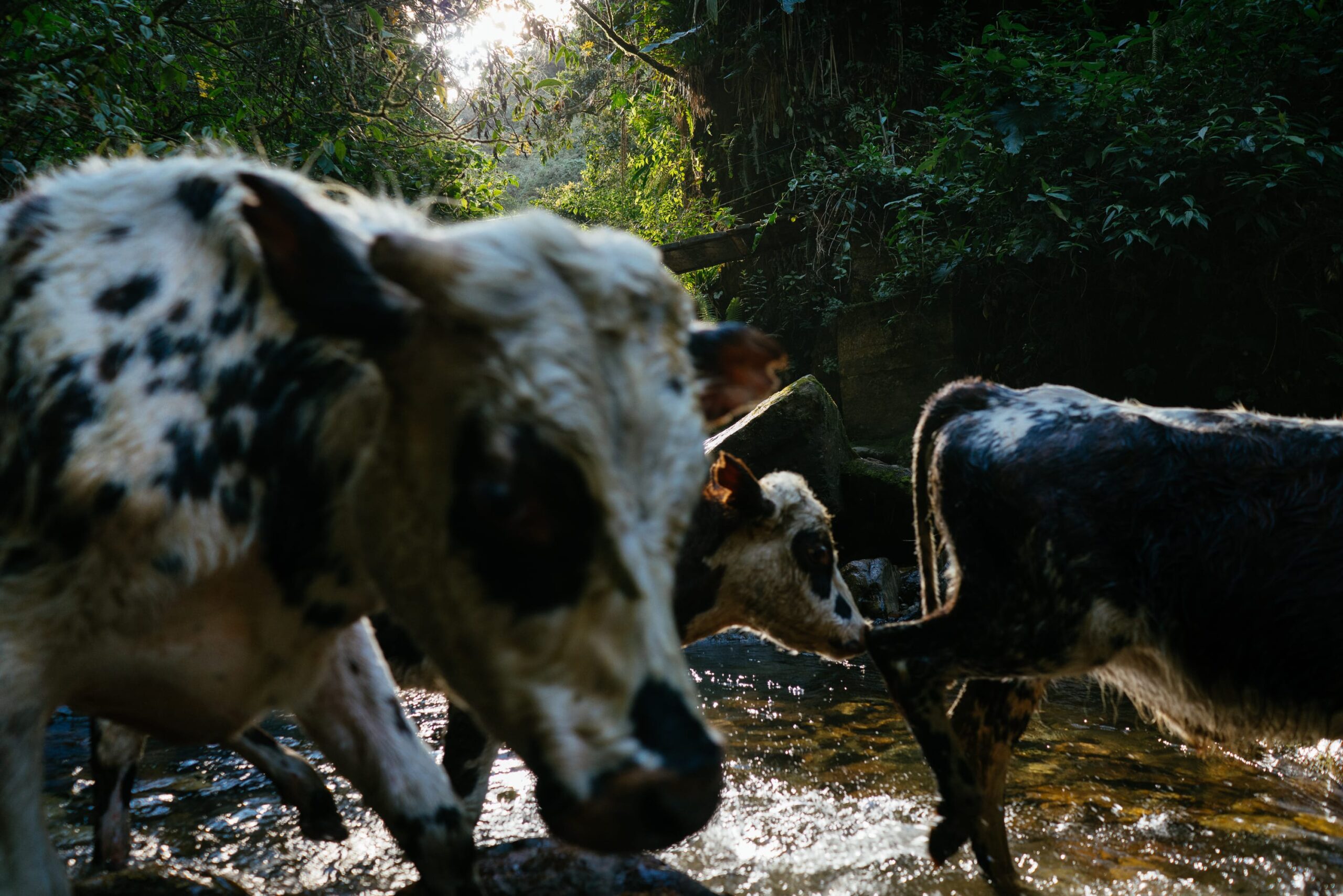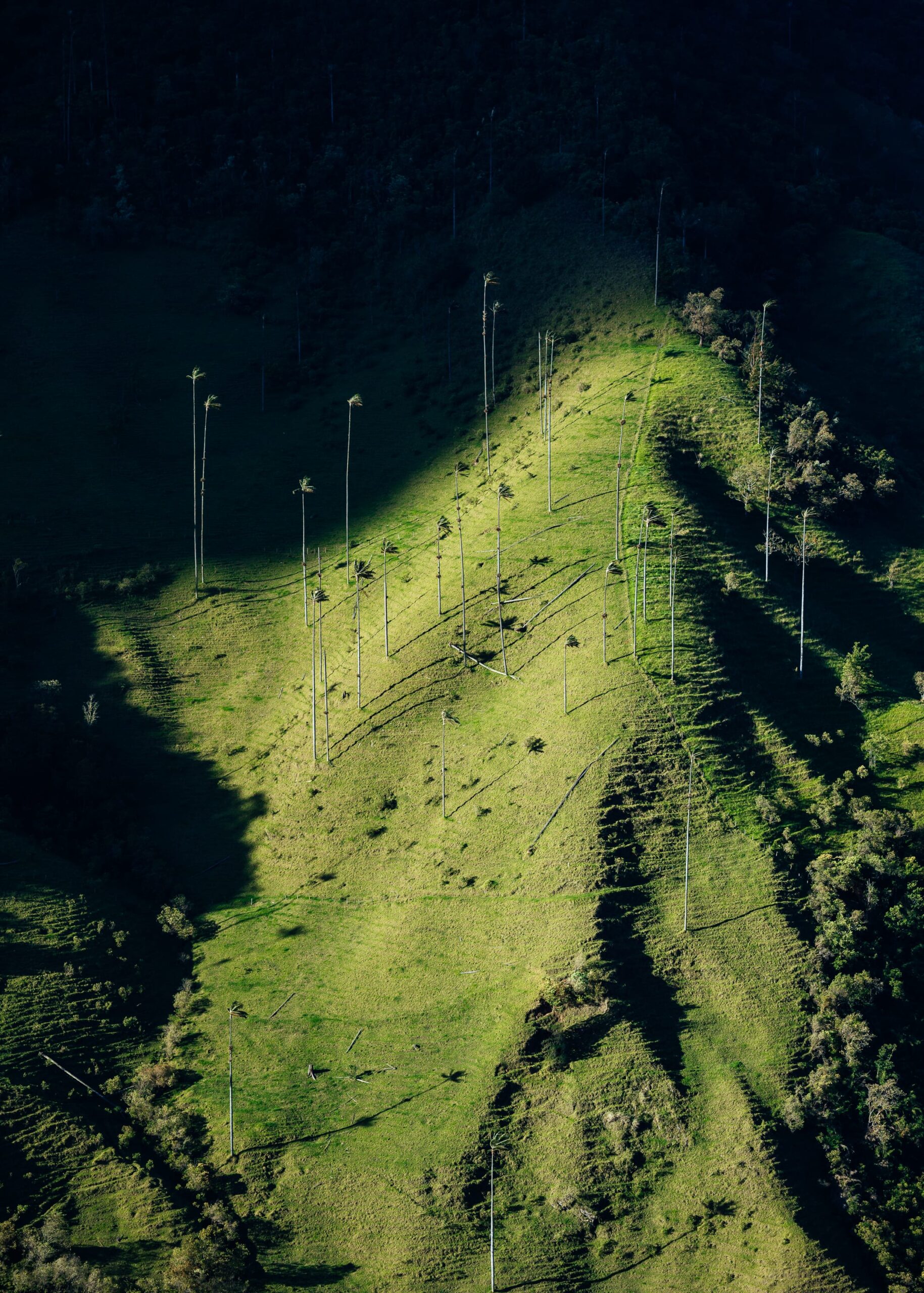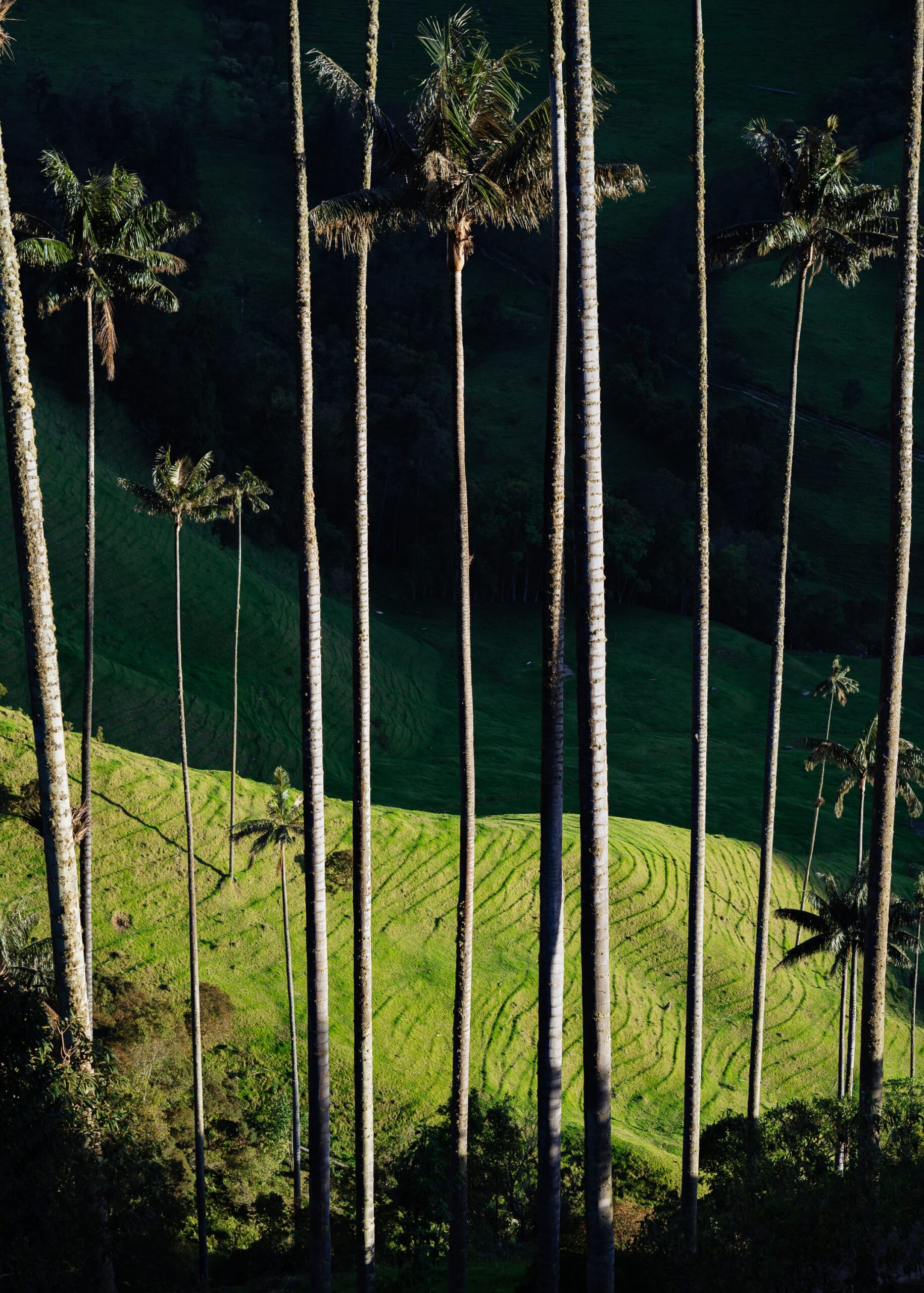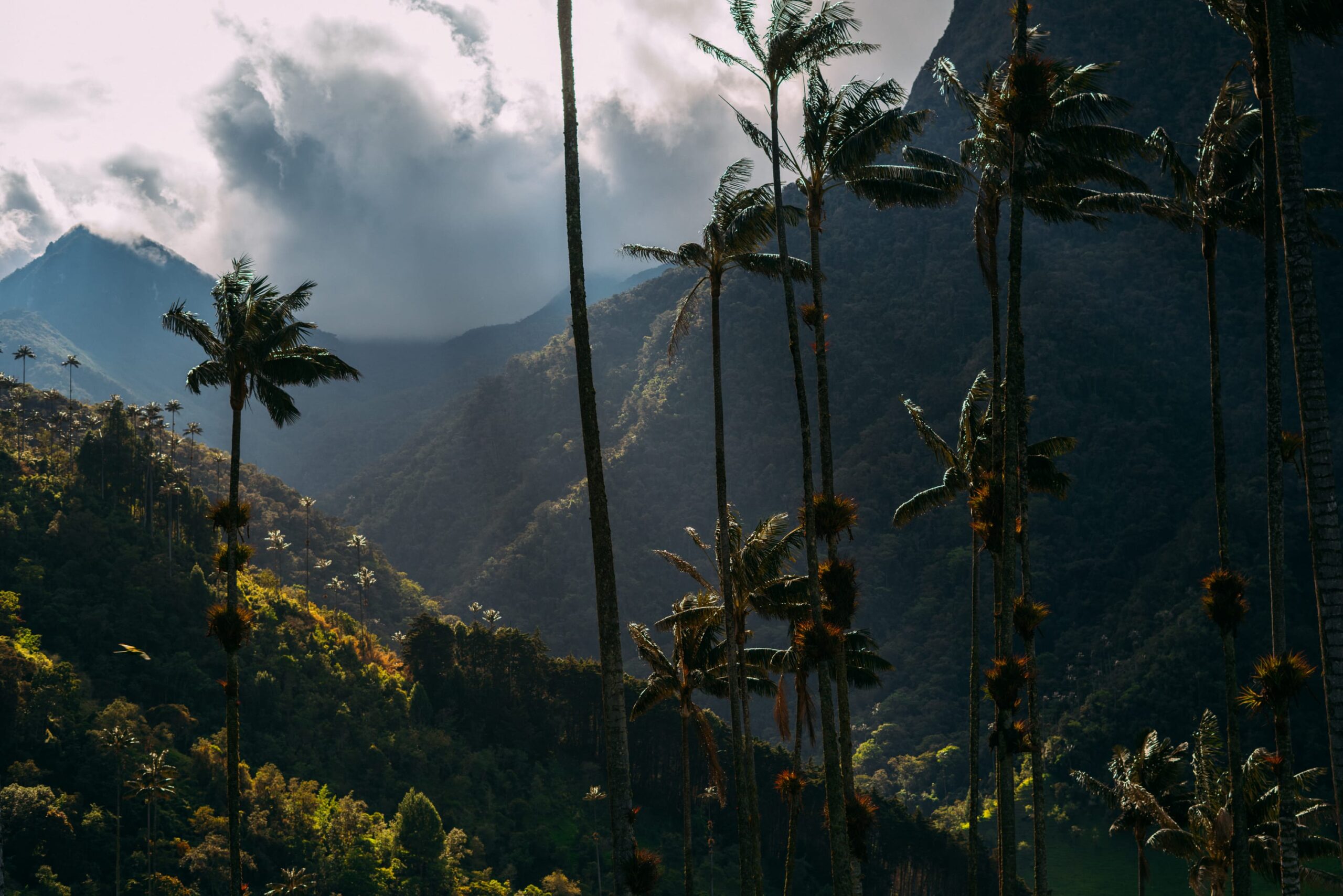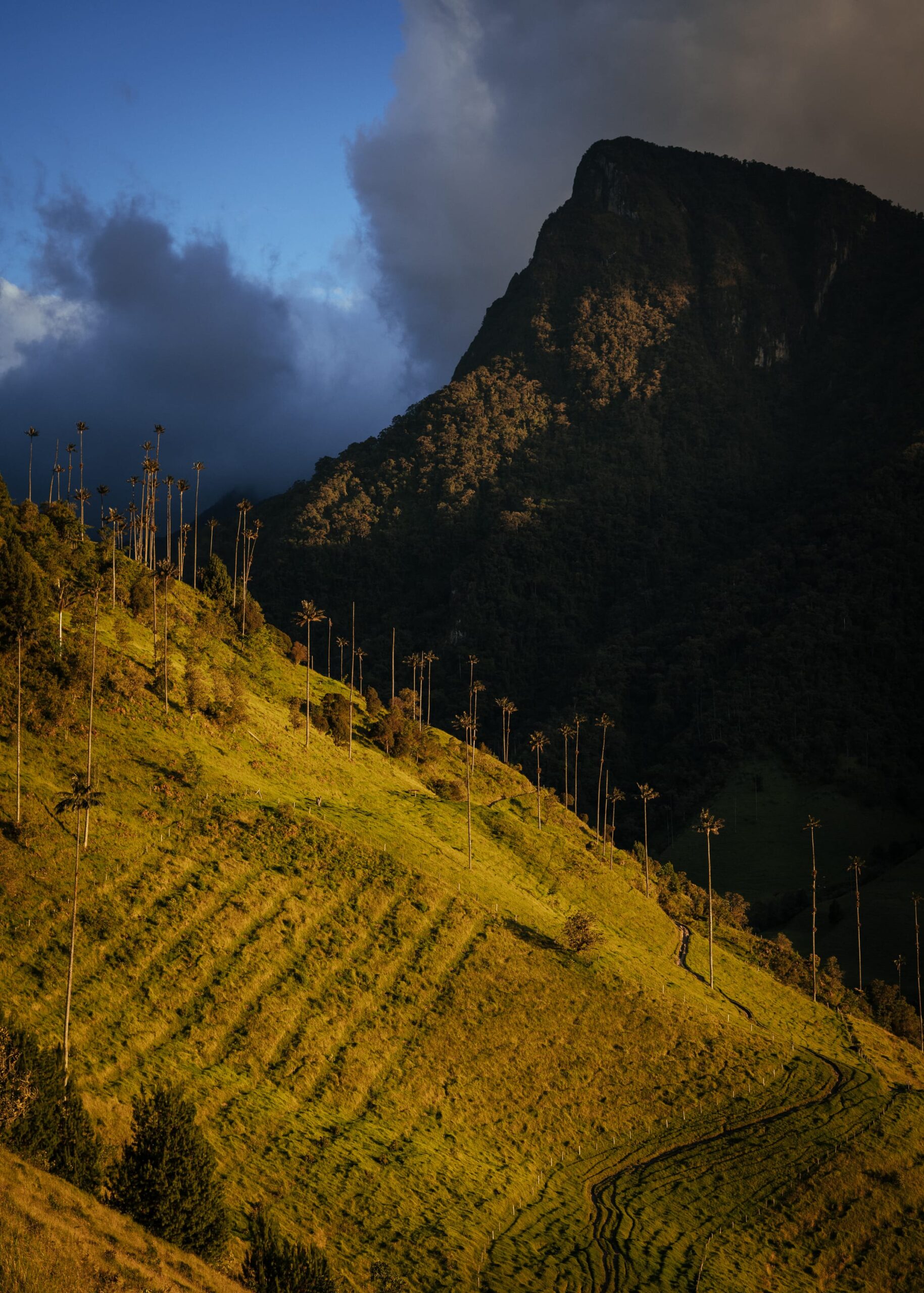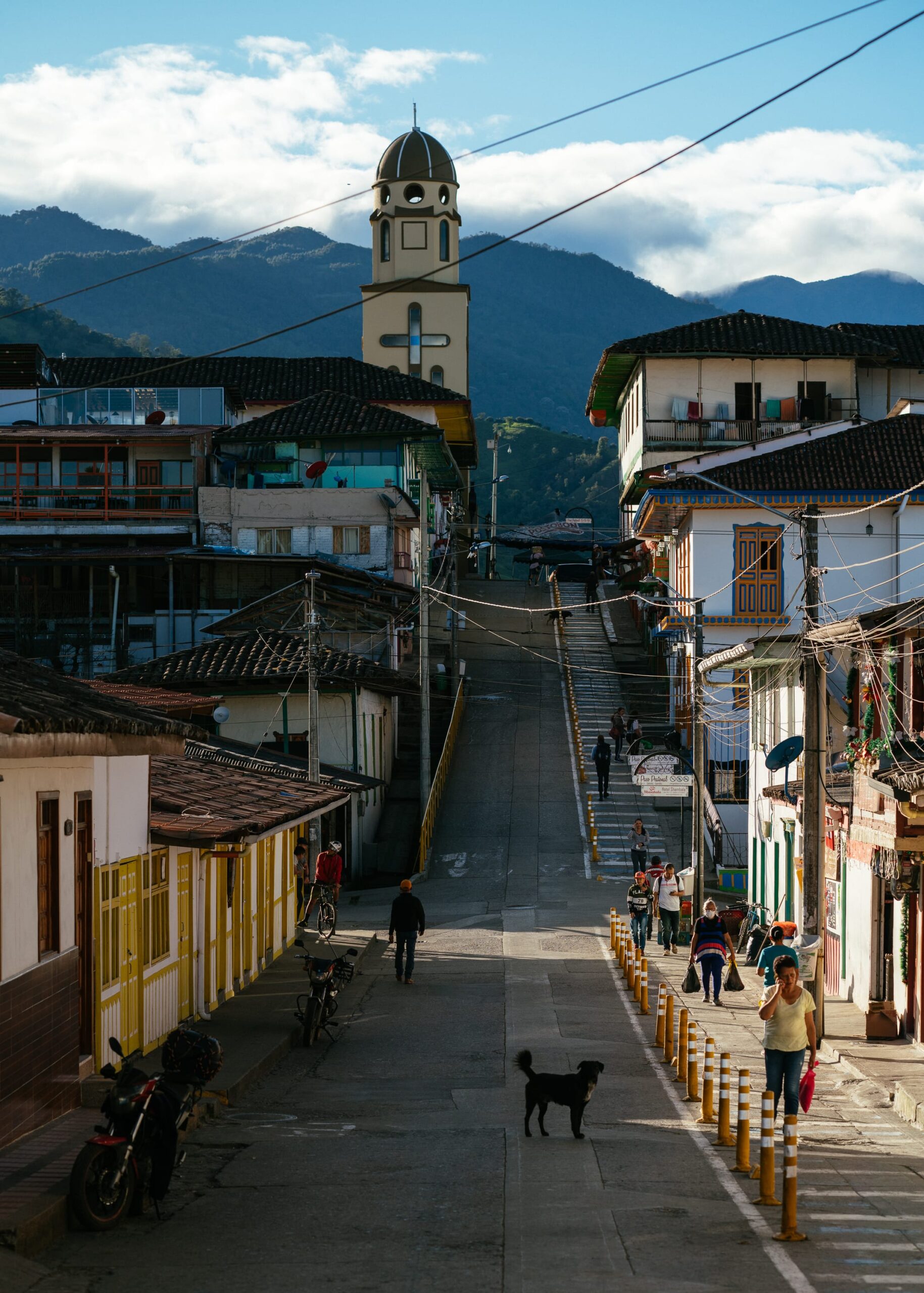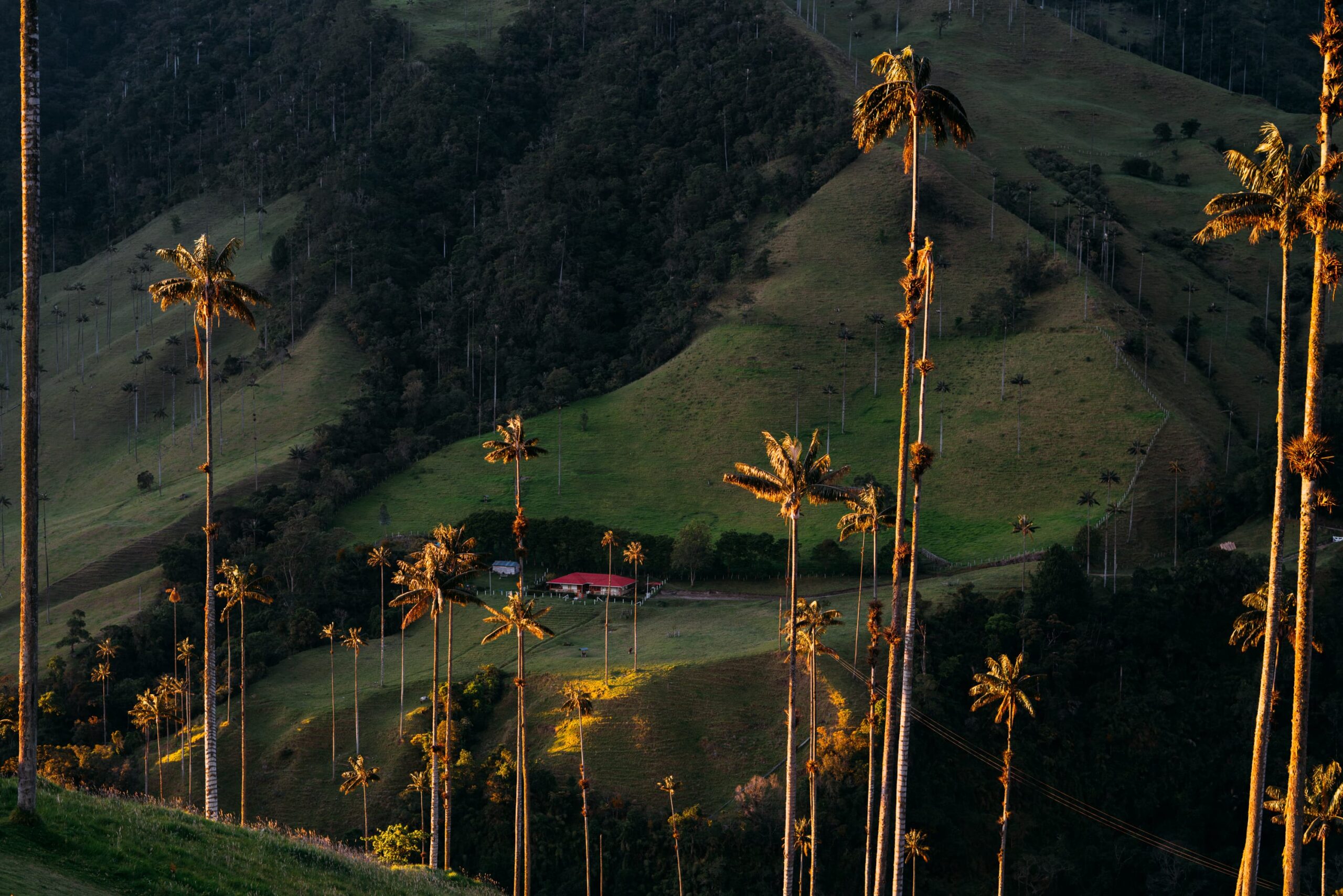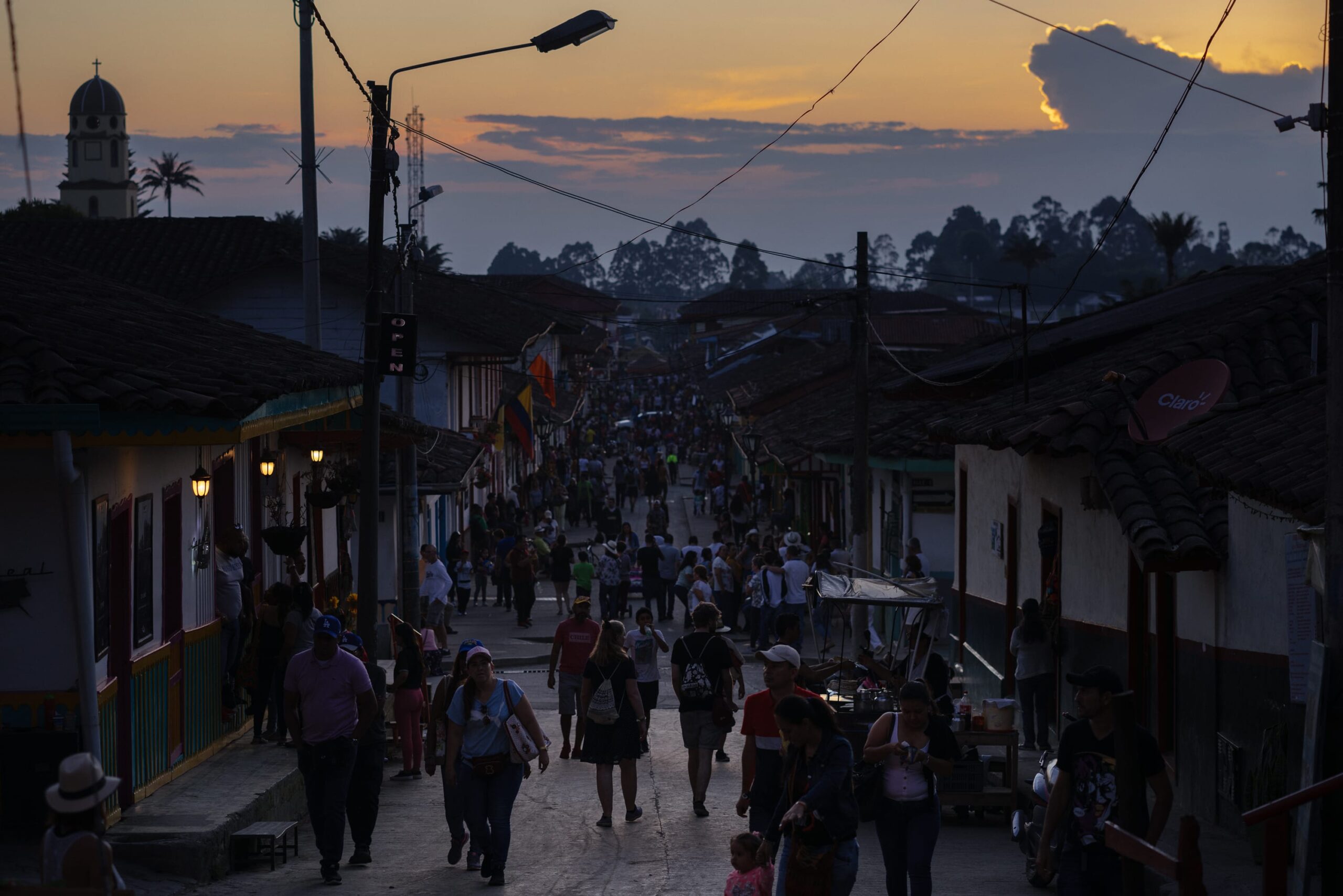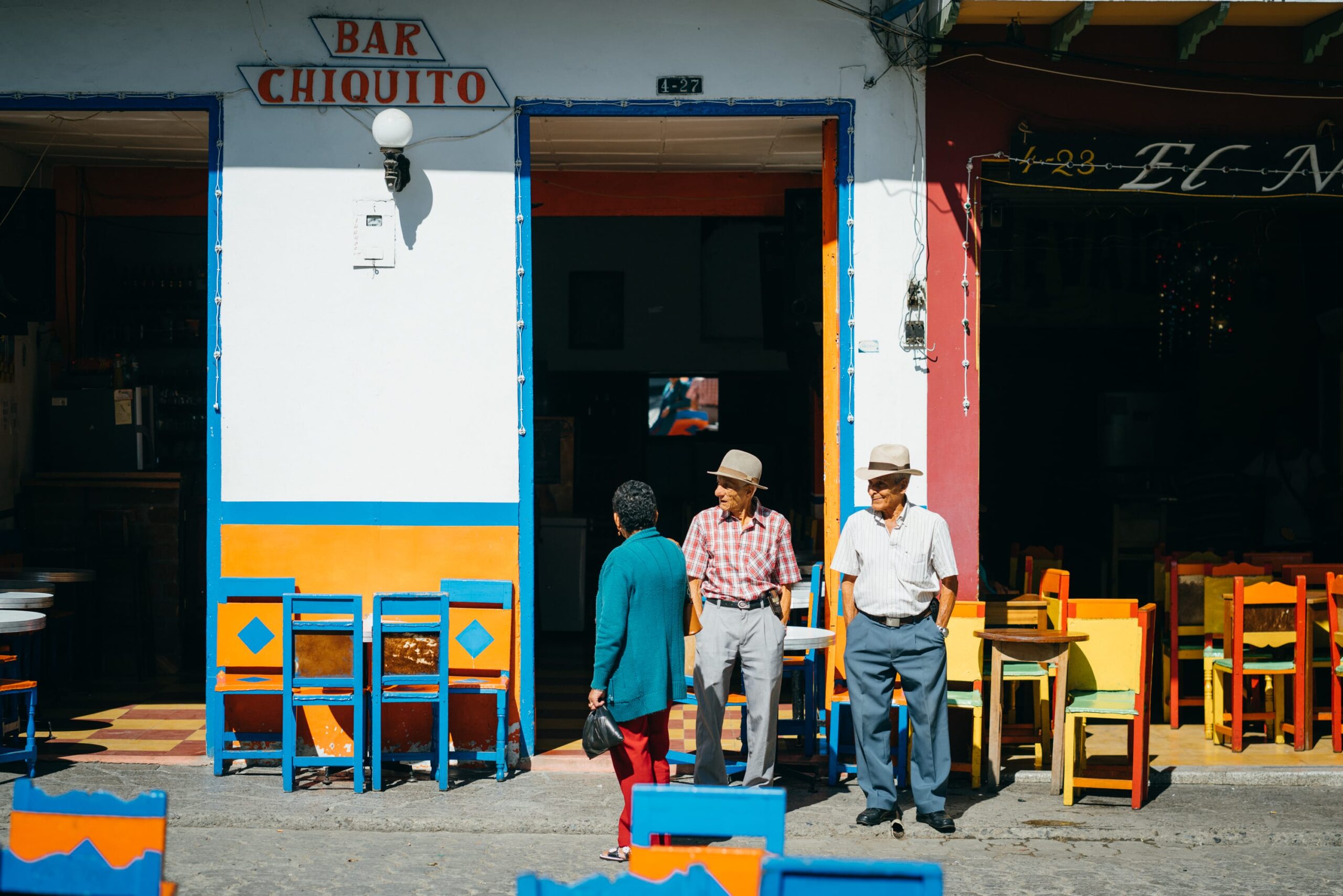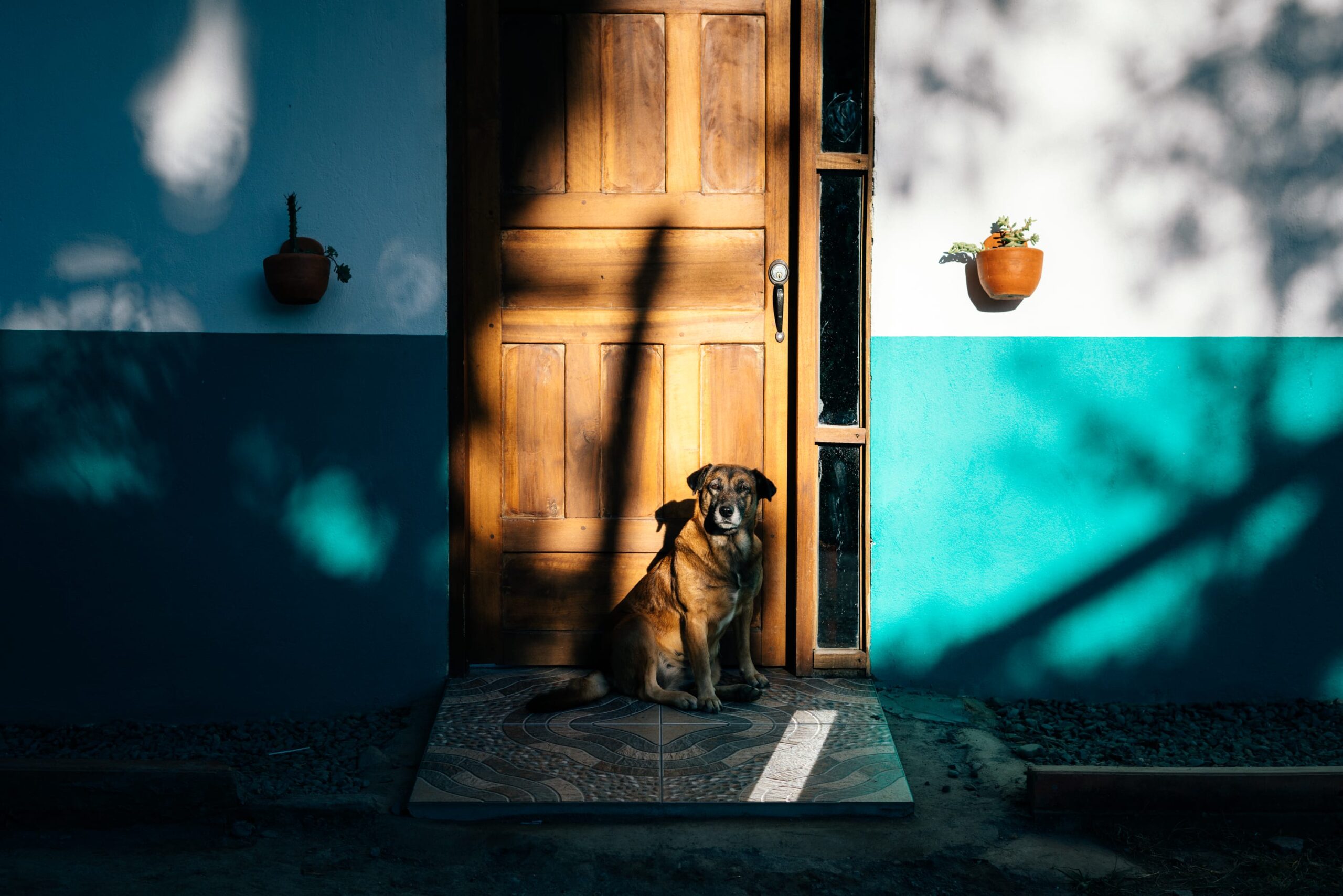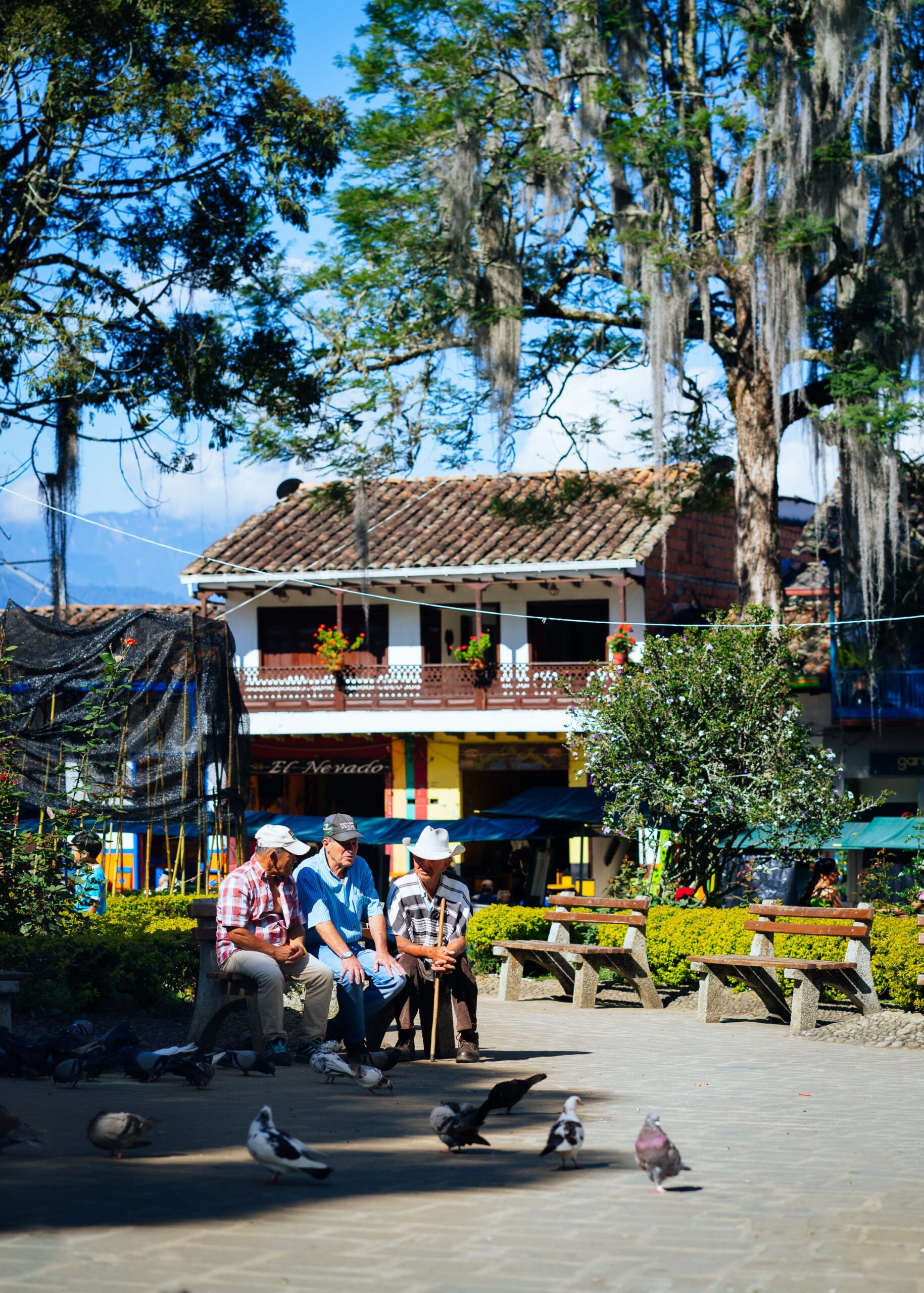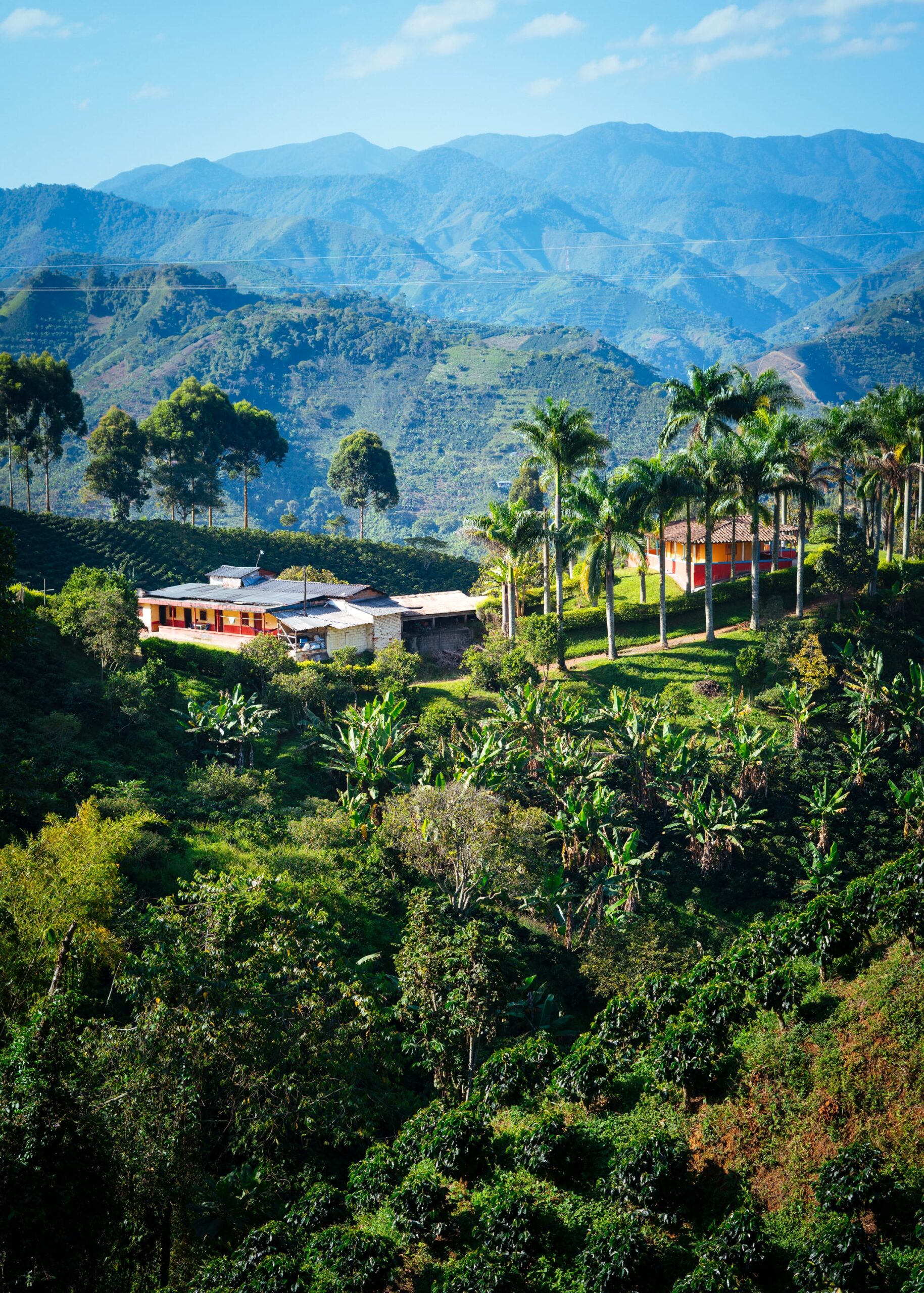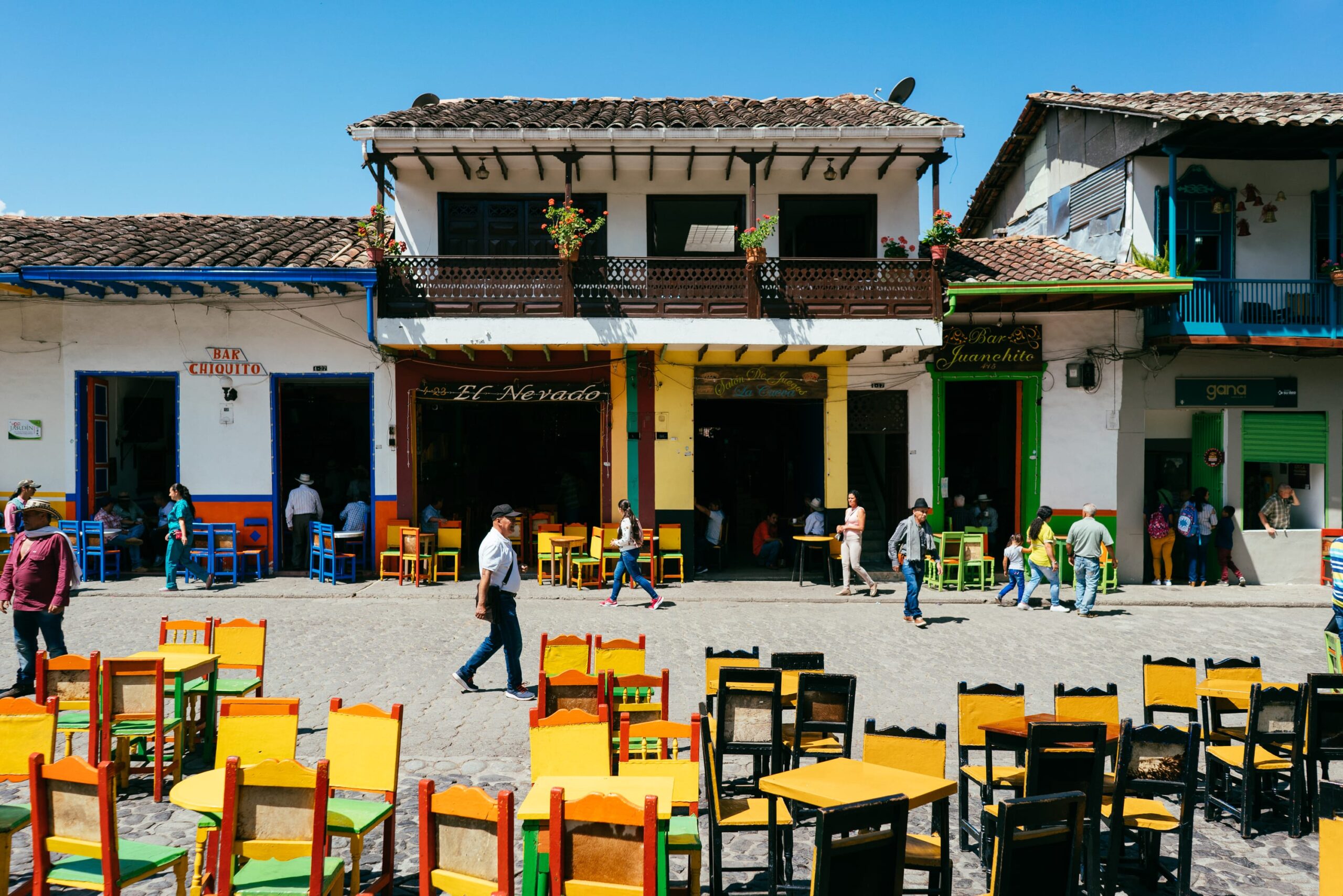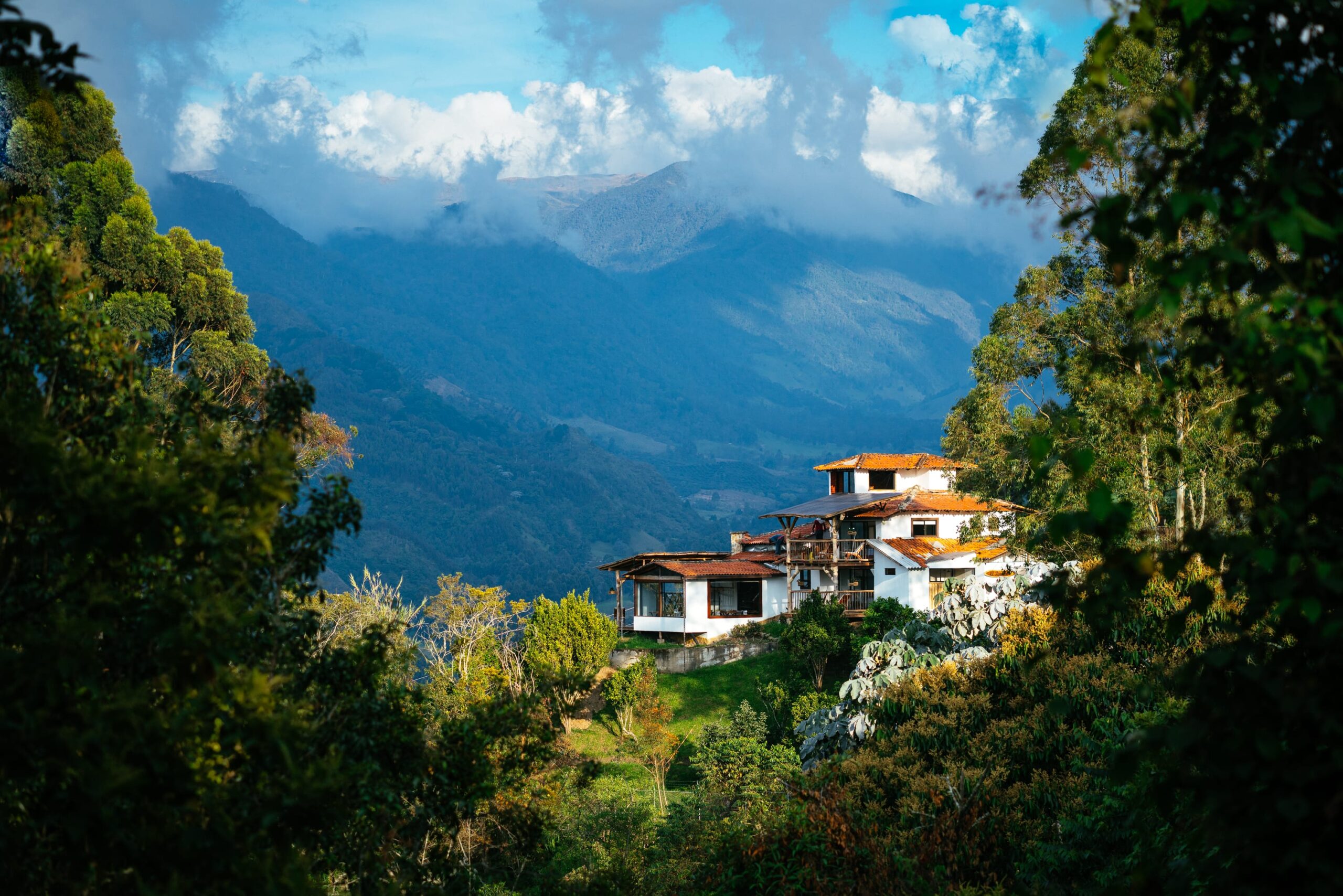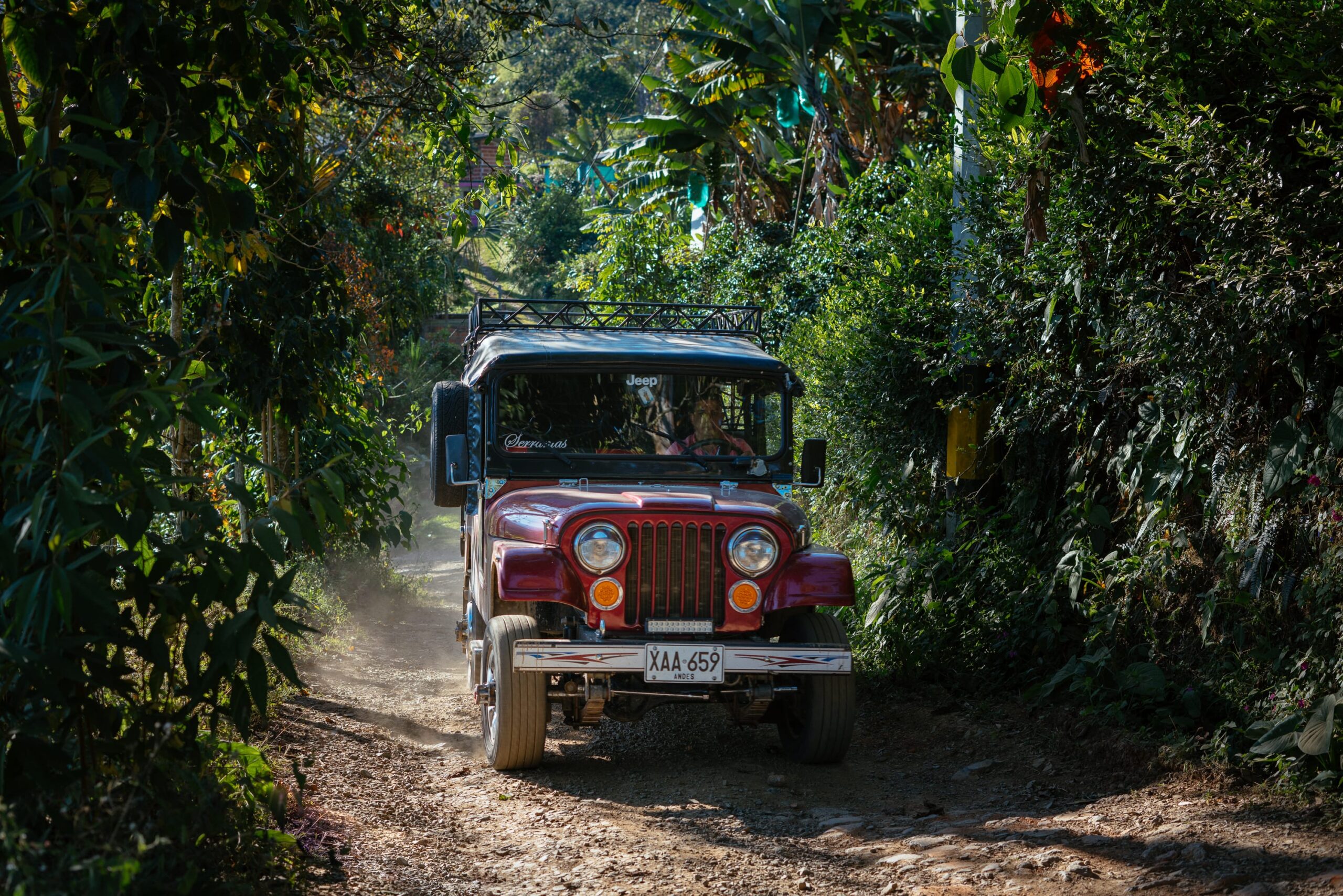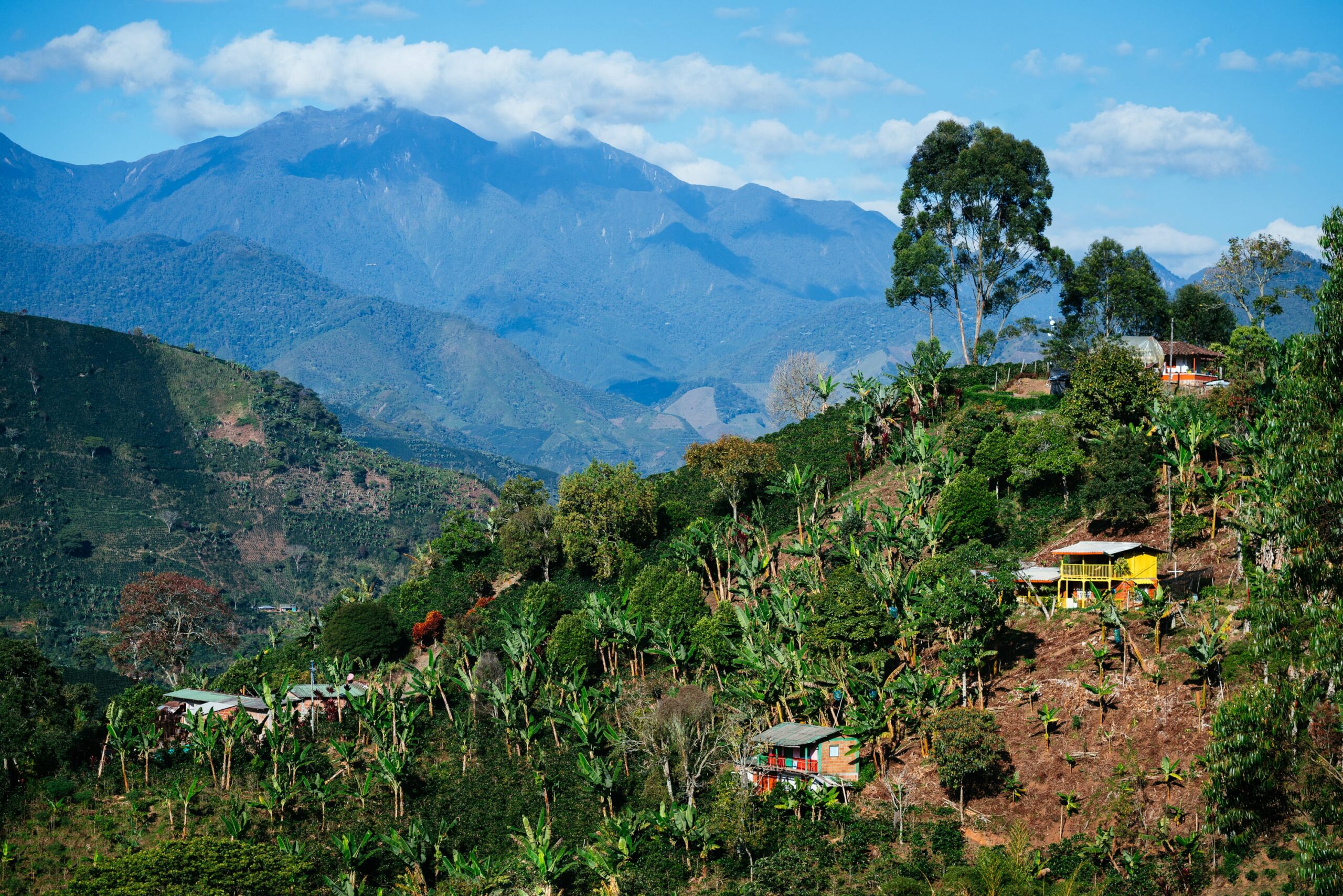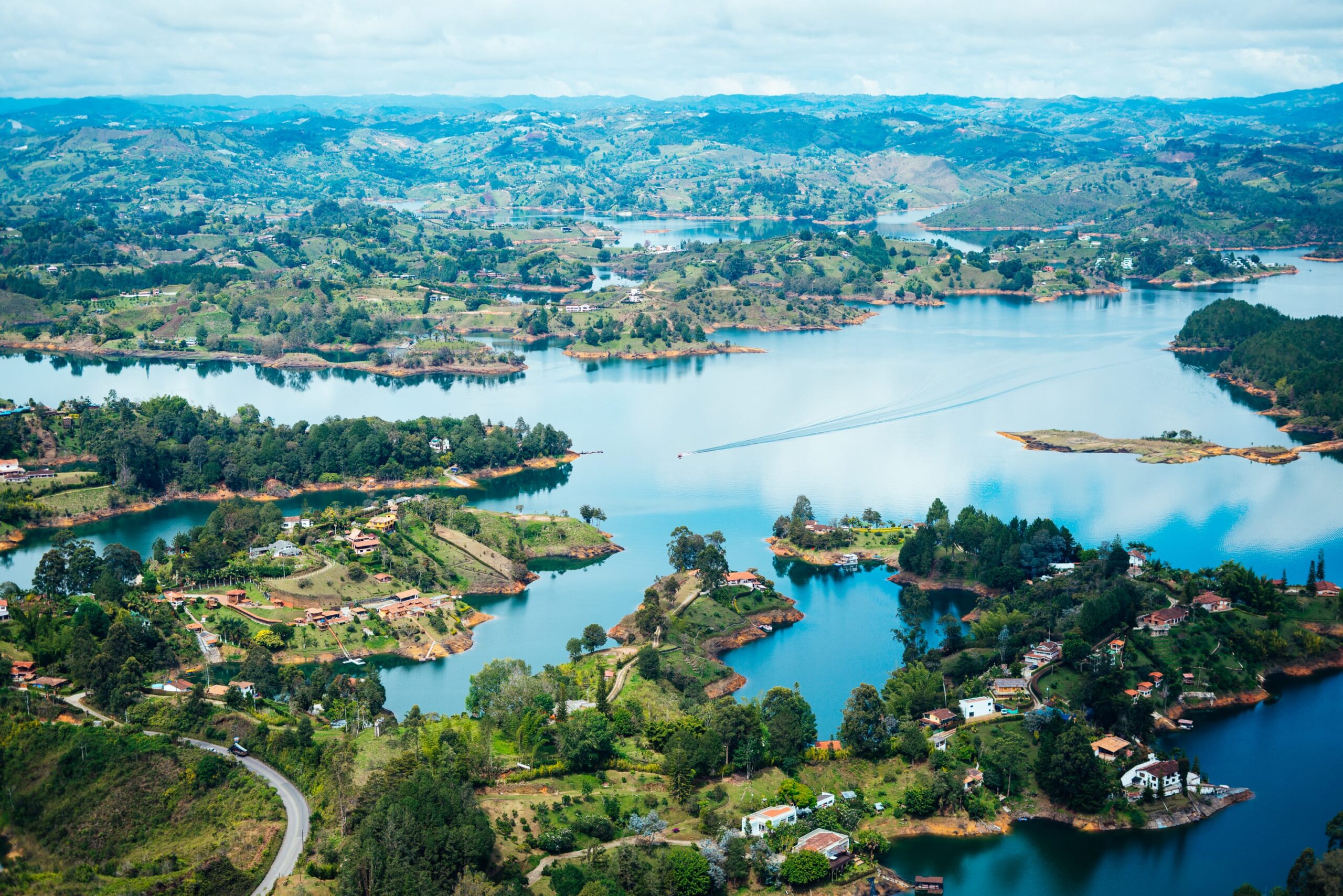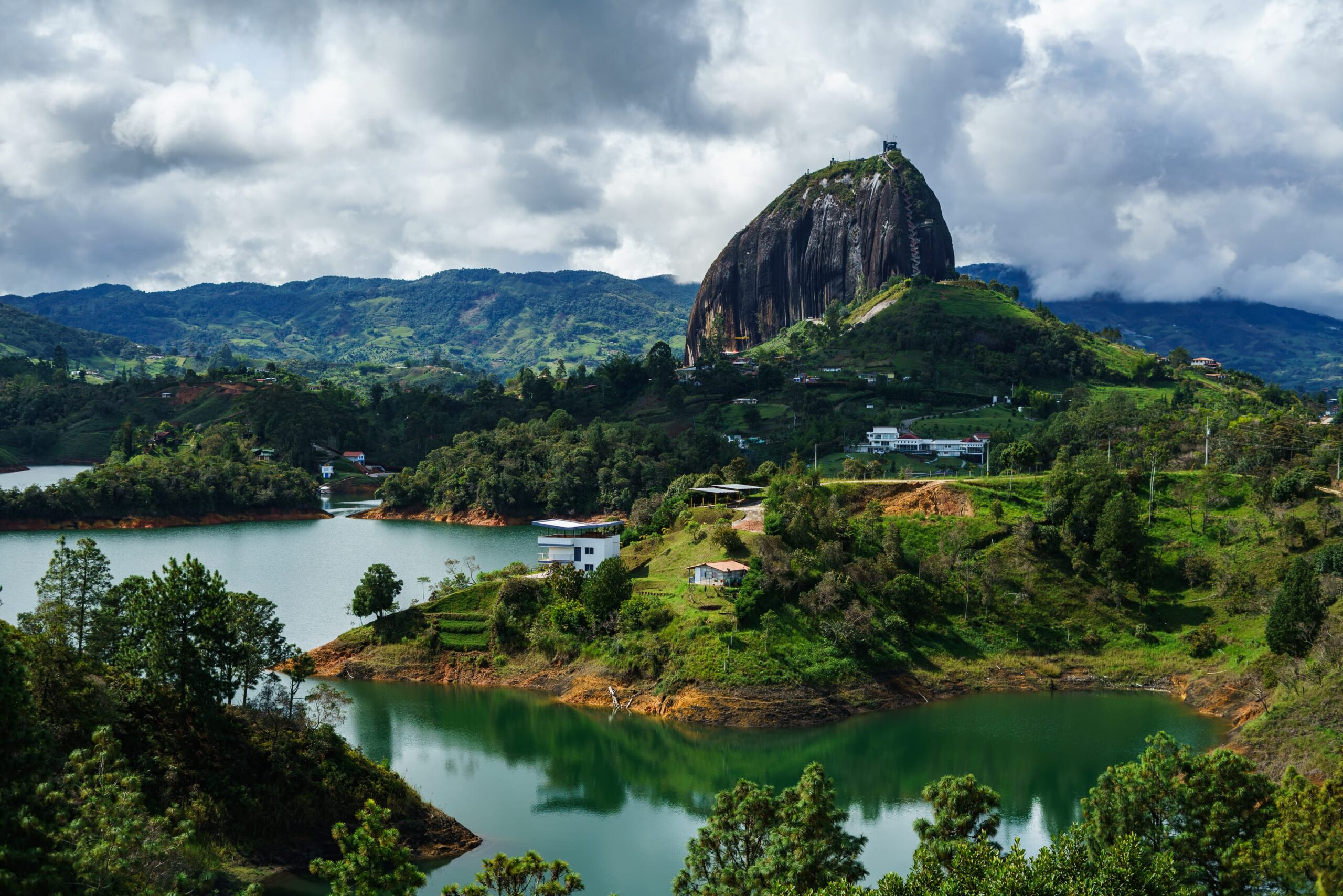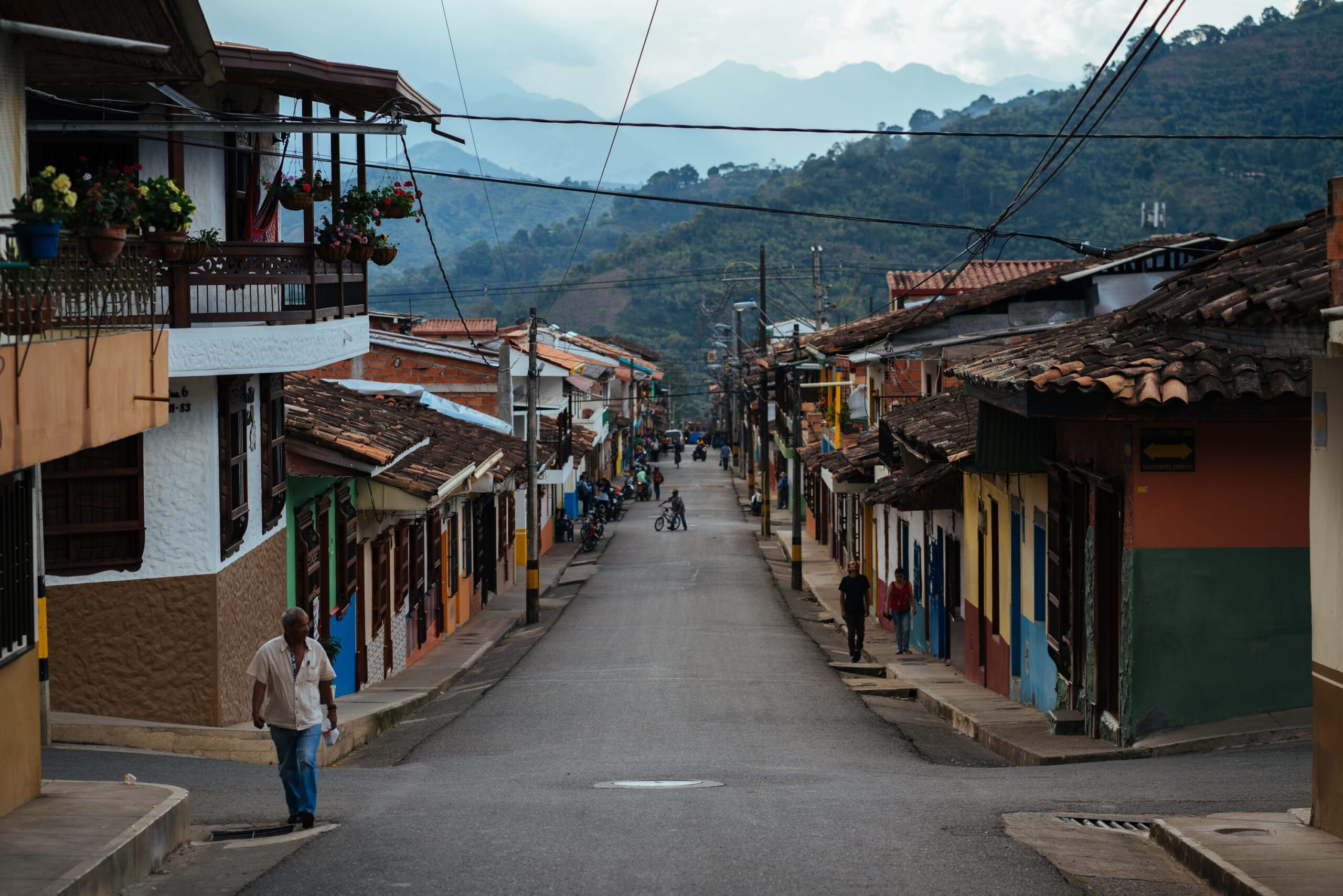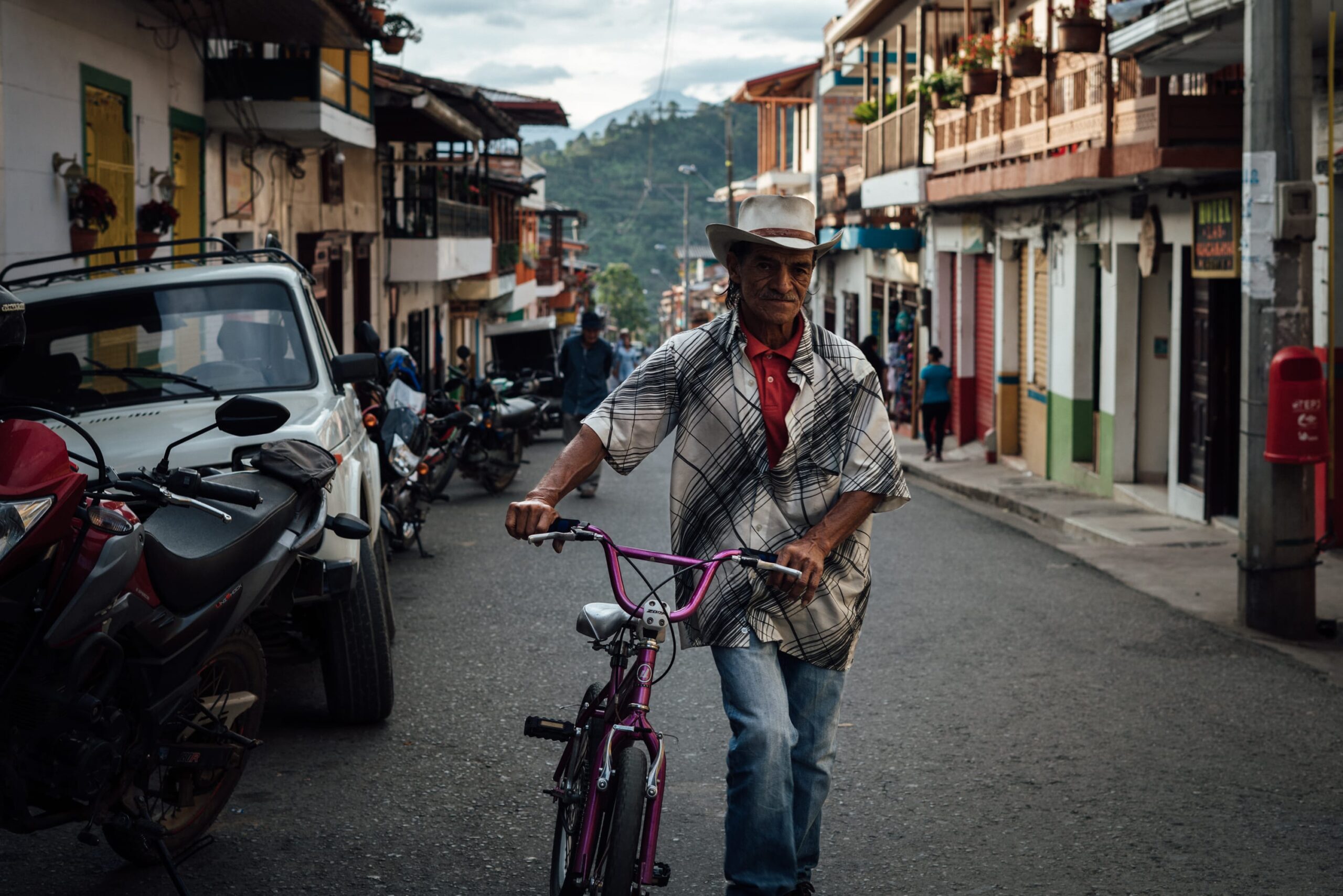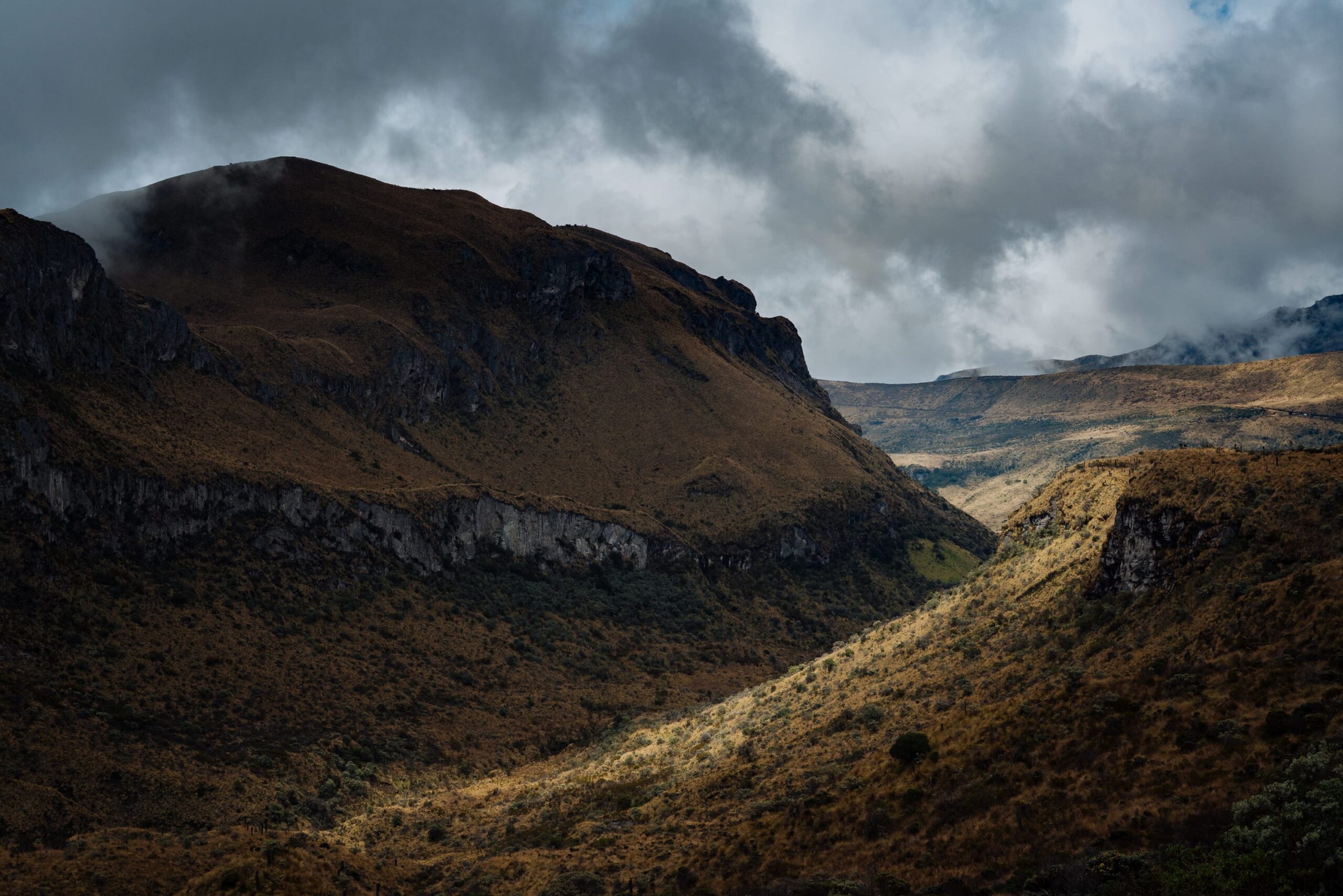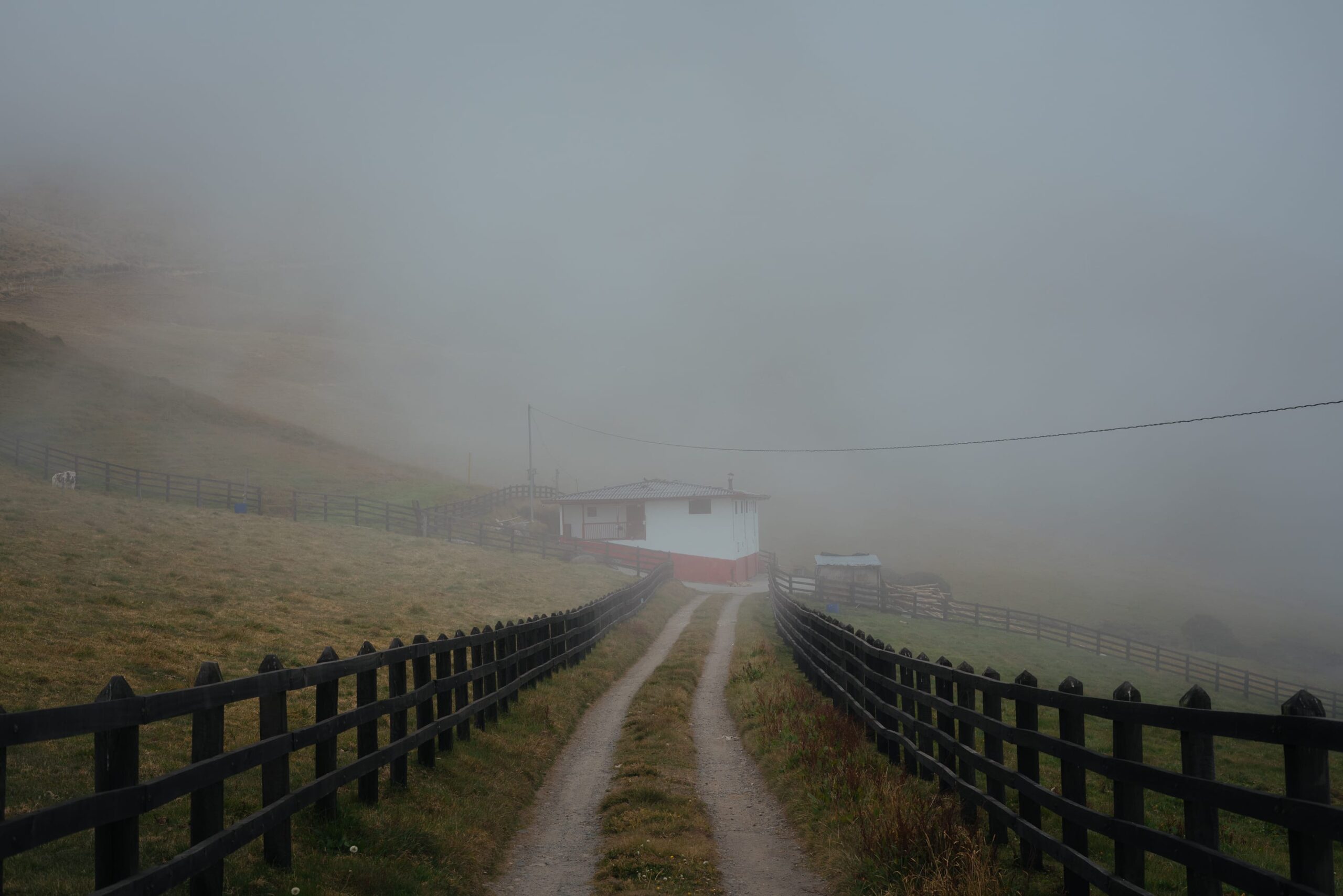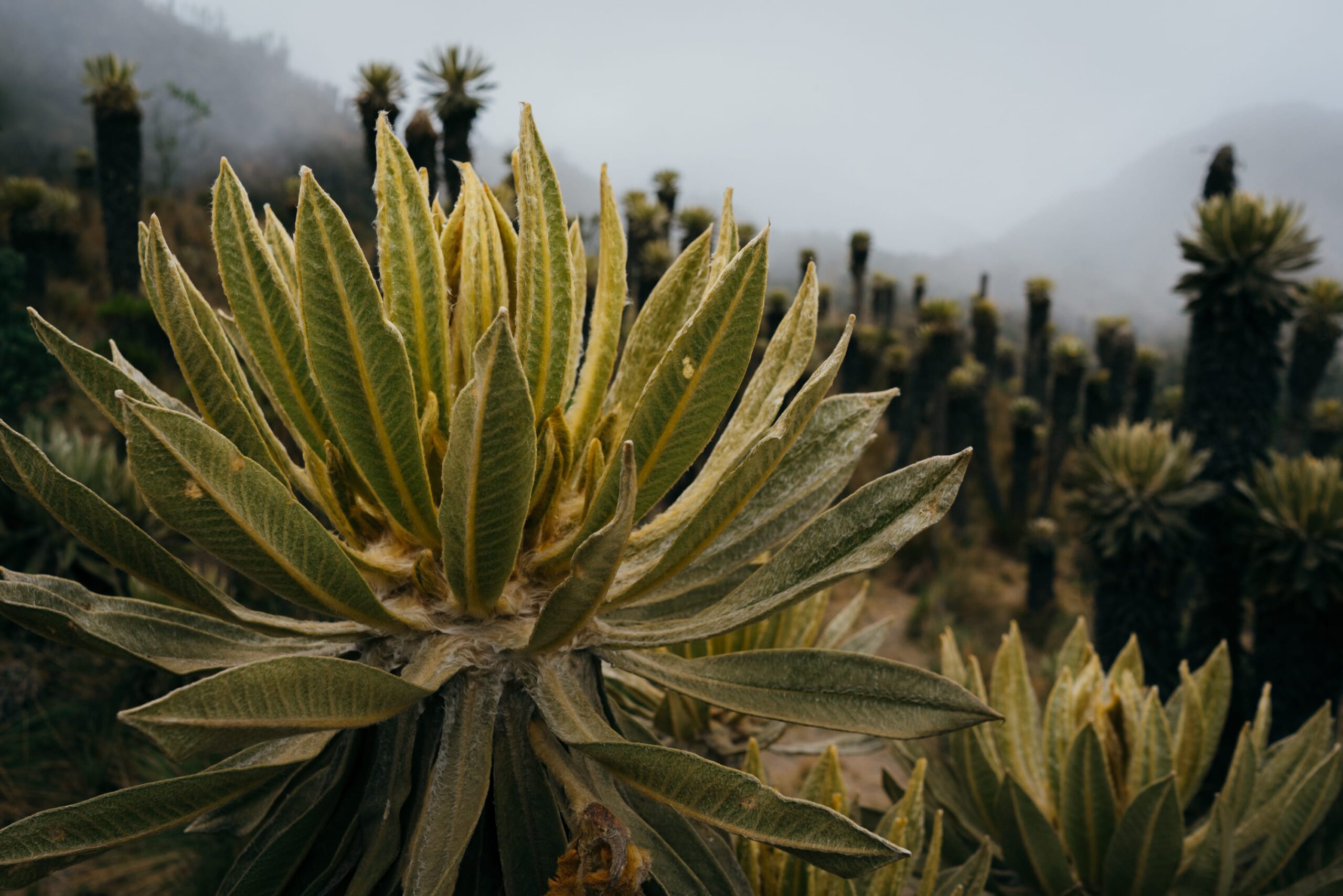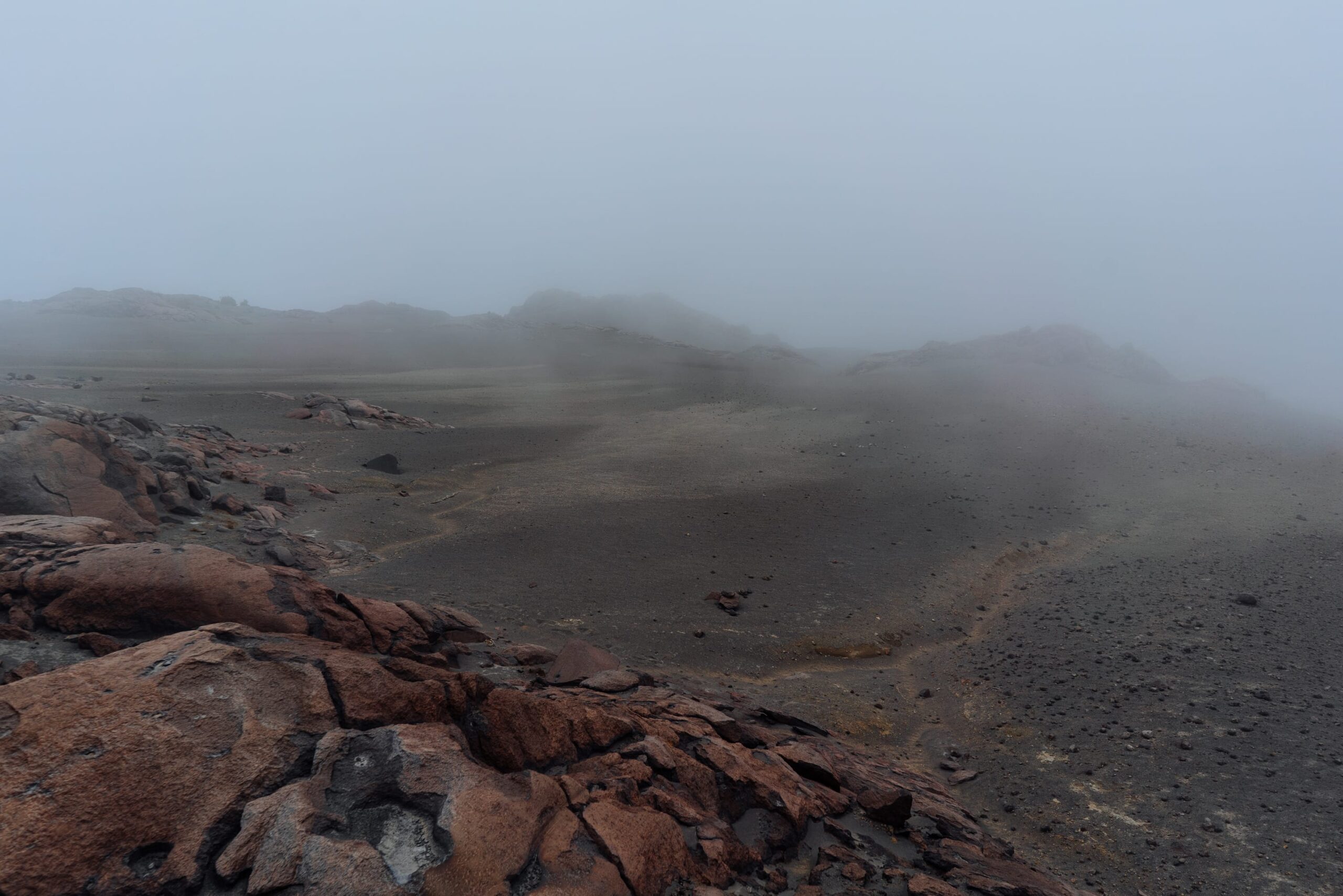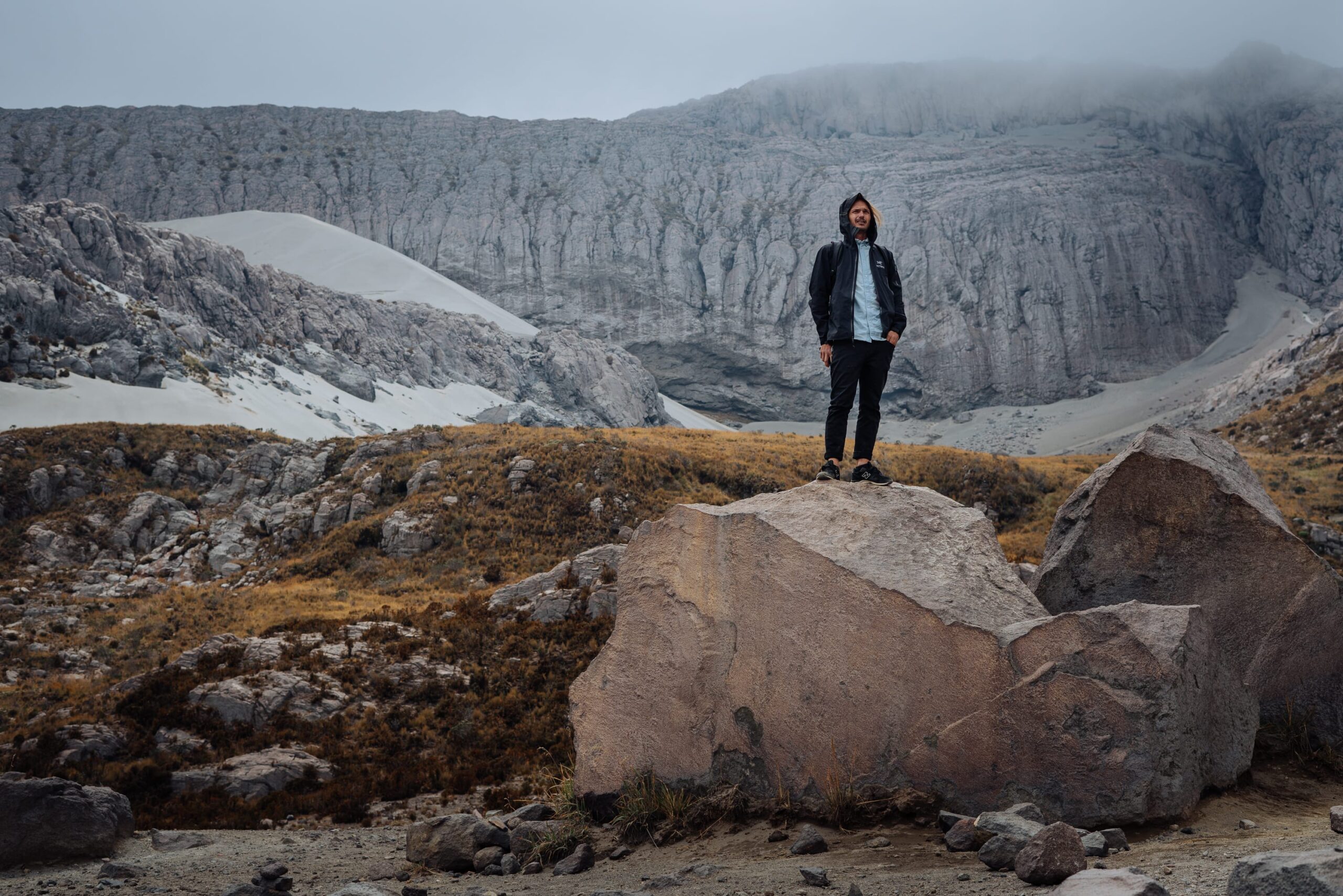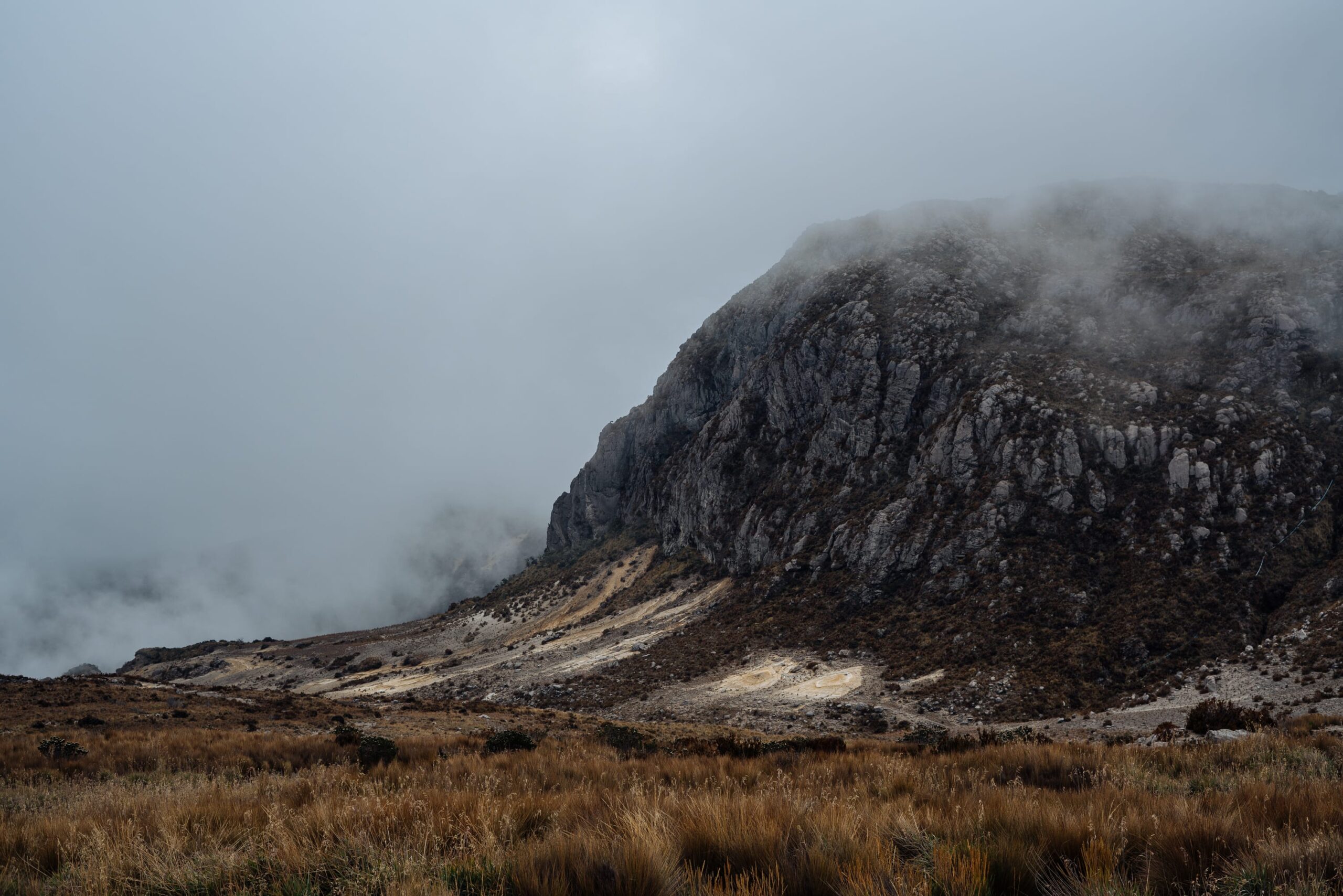Columbia Pt. III Cafetero
I hung around in Medellín for quite a while, and in the end, it started to feel a tad too long. A month in a new city always has its charm – plenty to explore and occupy your days, even if you’re travelling solo. But once you hit the three-month mark, boredom can creep in, especially without a solid social circle. Sure, I made some friends, mostly in the Rollerbladinding scene, but I never quite felt like I truly integrated. The truth is, I kept extending my Airbnb stays week by week without any real intention to stay for months and I had my own connection for supplies.
Originally, I had no intention of staying this long, but lethargy got the best of me. Instead of venturing to another corner of the country, I cocooned myself in my comfort zone, either extending my Airbnb or booking a new one just down the block. I kept this cycle going for a while, and then suddenly, the holidays hit. It turns out people in that corner of the world adore Christmas just as much as those in Europe. Public holidays and the holiday season, in general, can be a nuisance for travelers – higher prices, fewer available bookings, and more crowds swarming the attractions.
I aimed to spend the holidays in a place as off the beaten path as possible, so I lingered in Medellín for a few more weeks. My weekly routine mainly revolved around hitting up skateparks across the city. After two months and the start of a new year, it was finally time to bid farewell to the city. I can’t quite recall how I left, but I reckon a bus was the likely mode of transport.
The coffee triangle was a breath of fresh air – a chance to explore the rustic side of Colombia, away from the city’s conveniences. I adapted to a rhythm of spending three nights at each tourist attraction, allowing ample time for work and exploring local offerings. With a steady workload of 4-5 hours per day, it seemed like a pretty decent way to travel. It rarely played out perfectly, but you’ve got to set some ground rules.
There wasn’t a ton to do in the coffee triangle, especially without transportation or organized tours. It mostly revolved around the picturesque villages, nestled in the mountains and surrounded by nature, and the central squares, known as Zocalos. I’d visit coffee farms, embark on jungle excursions, and take a few hikes through the valleys. Staying in a village for three days can feel like an eternity; there’s only so much coffee and cake you can consume in a day. So, depending on the situation, I was often content to sit down and work.
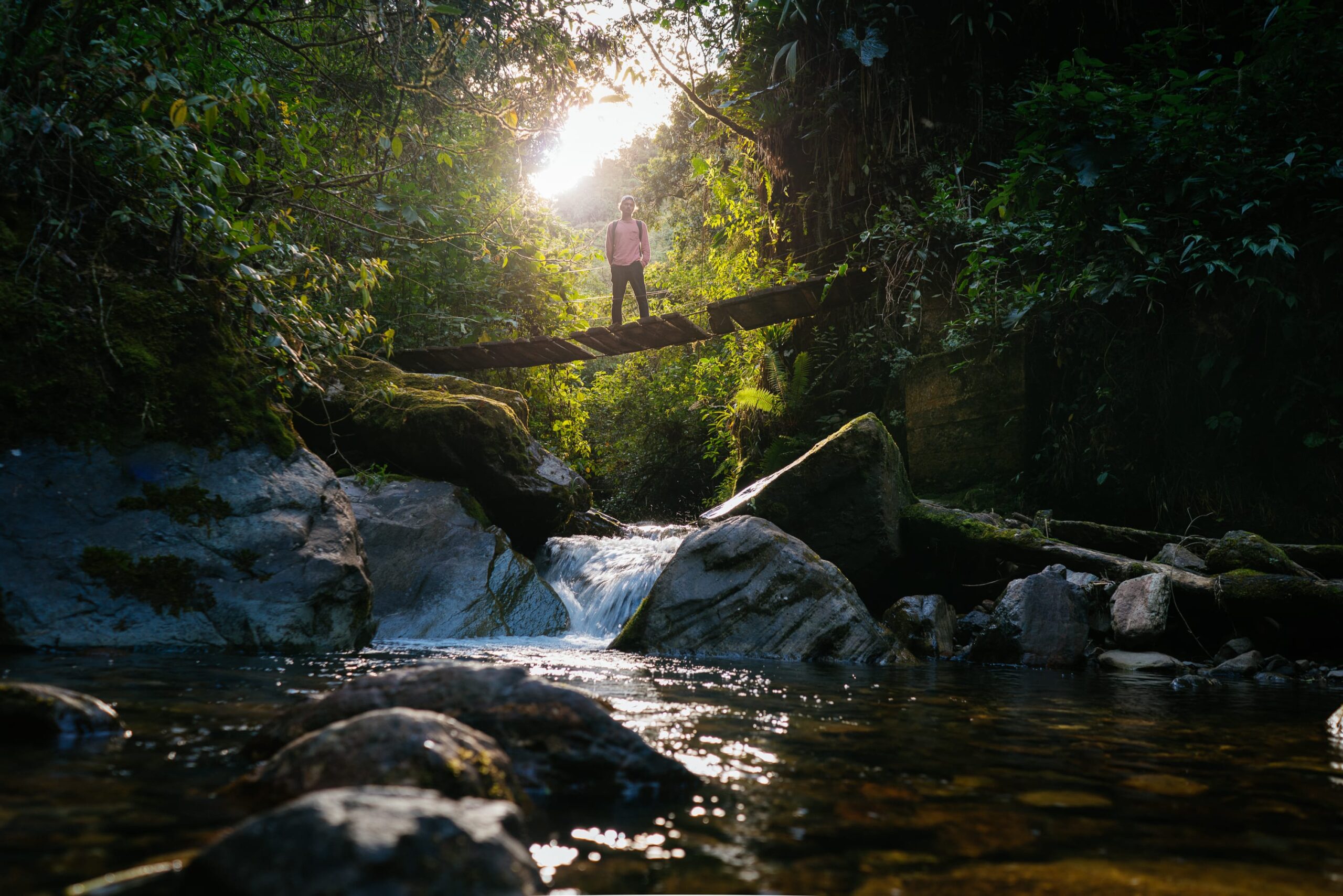
Bridge Selfie, Salento, Columbia
Due to the lack of a proper travel-companion I had to take those Insta-selfies by myself. It was always such a hassle to get the tripod out, Wifi connect the camera to the phone, set it up and then get to the spot to pose. All a lot harder than just taking a photo. In the end it was generally worth it, having a photo of myself on that bridge is better than an empty bridge or a some random person crossing it.
Once I’d seen one village, I felt like I’d seen them all. It was a bit like that in Nicaragua and Mexico too, especially Mexico. Aside from the main square with its church, the obligatory coffee tour, a handful of trendy restaurants or cafes catering to tourists, and a few charming side streets, there wasn’t a whole lot to do. My go-to activity was sipping coffee in the main square, soaking in the morning sun and people-watching. Strolling the streets near the Zócalo, I’d occasionally stumble upon some photogenic scenes in the morning light.
They say the best coffee gets exported, leaving the locals with the remnants. While there’s still good coffee to be had in Colombia, you’ll often find it in touristy spots at prices even higher than what we pay in the Western world. The average Colombian’s daily cup from a street vendor was, frankly, pretty dreadful, so weak it felt more like coffee-flavored tea.I relished hours spent lounging on one of the benches in the main square, sun on my face, a coffee in one hand, and a cigarette in the other. I’ve whiled away countless hours like that in so many places, on so many different benches. I reckon many of us have. Occasionally, people would stop by, and we’d engage in a bit of chit-chat. I always tried to be polite and friendly; it was an excellent opportunity to practice my Spanish and learn about the locals. Generally speaking, the less fortunate the person, the more open, interested, and friendly they tended to be, though it often came with a high likelihood of inebriation. I never fancied chatting with drunks; all the slurred words and forgetfulness, not to mention the smell – that’s where I’d draw the line, too inebriated, not interested.
The Cafetero, as Colombians call it, lies at the heart of the coffee triangle, renowned for producing the majority of Colombian coffee. The must-visit towns were Salento, near the Cocora valley and many coffee farms, and Jardin, a town quite similar but lacking the famous valley and its towering palm trees. My journey led me first to Salento, a striking contrast after my extended stay in Medellin. It was touristy, sure, but it was also a place where hardworking folks could supplement their incomes through tourism. The vibes were generally good, folks didn’t have much, but they lived in a pleasant environment and seemed content with a life where technology hadn’t entirely taken over. I should note that by 2020, nearly every Colombian had a smartphone. The old ways had faded even in the remote Colombian mountains; the older generation had embraced them, and cell towers were sprouting up everywhere.
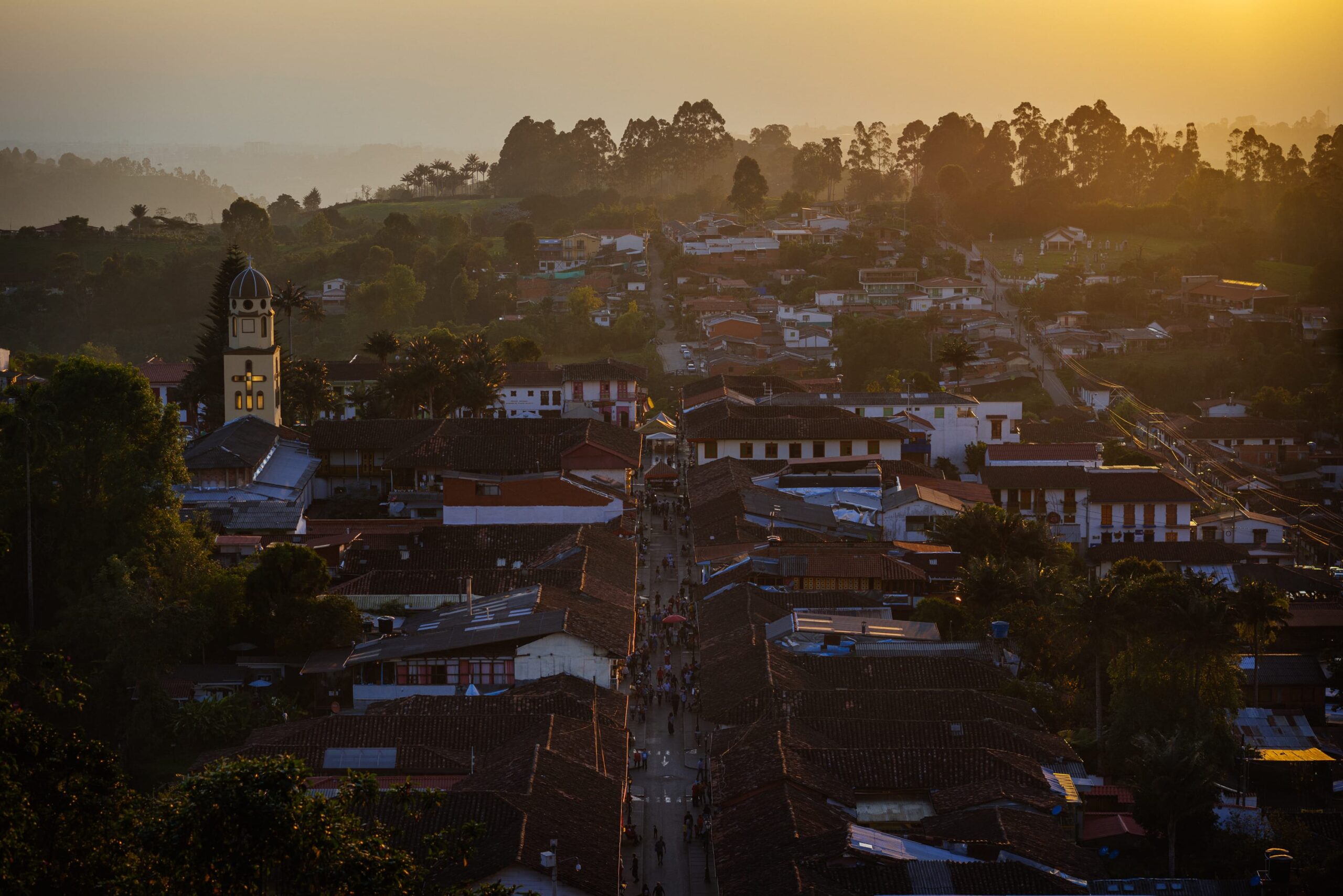
Village skyline, Salento, Columbia
I came to Salento straight from Medellín, the gateway to the Cocora valley. I had seen too many colonial towns before, the architecture or the villages layout wasn’t that interesting any more. It was also a very touristy spot withan abundance of souvenir shops, restaurants and hotels. Unlike many other Ccolonial (coffee) towns Salento had some sort of viewpoint which made for amazing views of the surrounding landscapes.
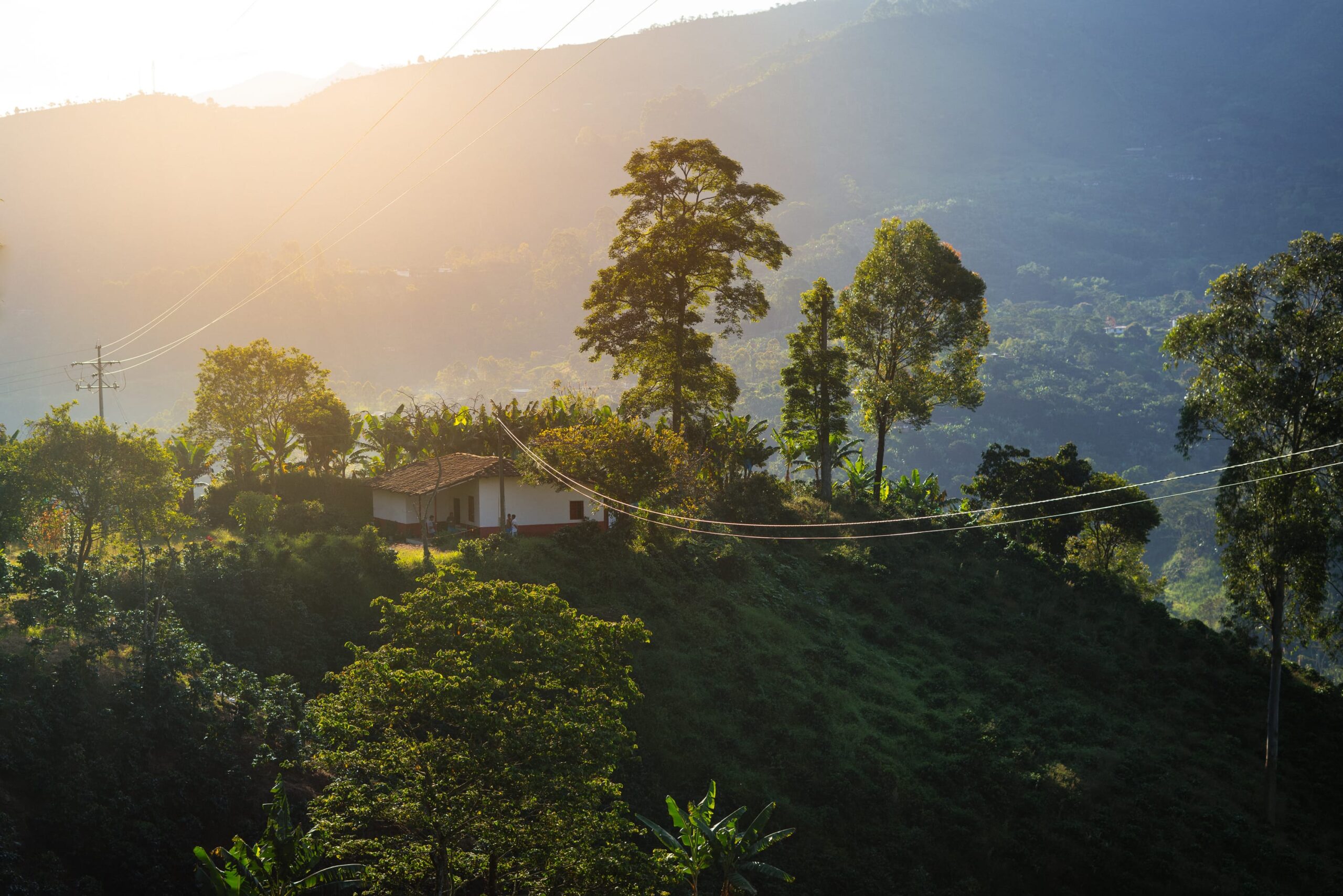
These villages were impeccably maintained, with a special focus on the Zocalo, the heart of the village where locals and tourists mingled on weekends. They’d dine at restaurants, attend church, or join in local festivities. These were incredibly safe and peaceful places, a stark contrast to the reality of Colombia’s drug wars, which remained far away or well concealed. In fact, it felt so secure that one morning, I left my wallet on a bench at my usual coffee spot in the park.
I realized my blunder too late, and when I returned to search for it, it had vanished. I asked around at the cafe (where I suspected I might have left it) and the shops around the village square, creating quite a commotion. Within minutes, the Good Samaritan who found it stepped forward. It was a critical save because my credit card (my preferred way of getting cash) was in there, along with around 250 Euros in Colombian currency. I was overjoyed to retrieve my wallet, and I handed the man about 30% of the money inside as a reward. In the end, everyone was content – the man flaunted his reward, the cafe’s patrons applauded my decision, and I avoided the headache of losing my most crucial card and dealing with a host of other problems.
These towns, steeped in colonial history, featured houses with a distinct aesthetic, painted in vibrant hues. Tourism footed the bill for fresh coats of paint and maintenance, creating job opportunities for the locals. Colombian tourism was also a thing; Colombia boasted a small upper class eager to flaunt the wealth accrued from the drug trade by their distant relatives. Most of the tourists in these places were well-to-do Colombians, followed by more affluent Central and South Americans, and then, the rest of the world.
As I strolled through the narrow, grid-like streets, I caught glimpses through doors and windows into traditional Colombian life. Families gathered in living rooms in front of the TV, neighbors tied horses to their front doors. Television played a significant role; I’d often see it blaring all day in the most rudimentary sheds. With little else to do in these villages, people relied on sports, drinks, and TV to pass the time alongside their likely strenuous daily labor. Alcohol was a pervasive issue across Central and South America, and people tended to get drunk or high on cocaine after sundown, especially on weekends and public holidays. It was unwise to drive or travel in rural areas on Sundays after 3 pm, for instance. The backroads in the boonies lacked surveillance and a significant police presence, allowing folks to do as they pleased, leading to horrific accidents.
I spent my time hanging around town and strolling the streets leading out of the city for several kilometers. There was a scenic viewpoint where I could watch the sunset over the quaint town, not to mention an abundance of coffee shops surrounding the main square. The road out of the village also happened to be the road to the next town. It was one of the windiest, steepest, and downright hair-raising roads I’d ever encountered on a bus. The driver even warned passengers who weren’t regulars to keep an eye on the horizon and have a vomit bag ready, just in case. The views were breathtaking, and there were far too many photo opportunities for me to capture on the drive to the next town.
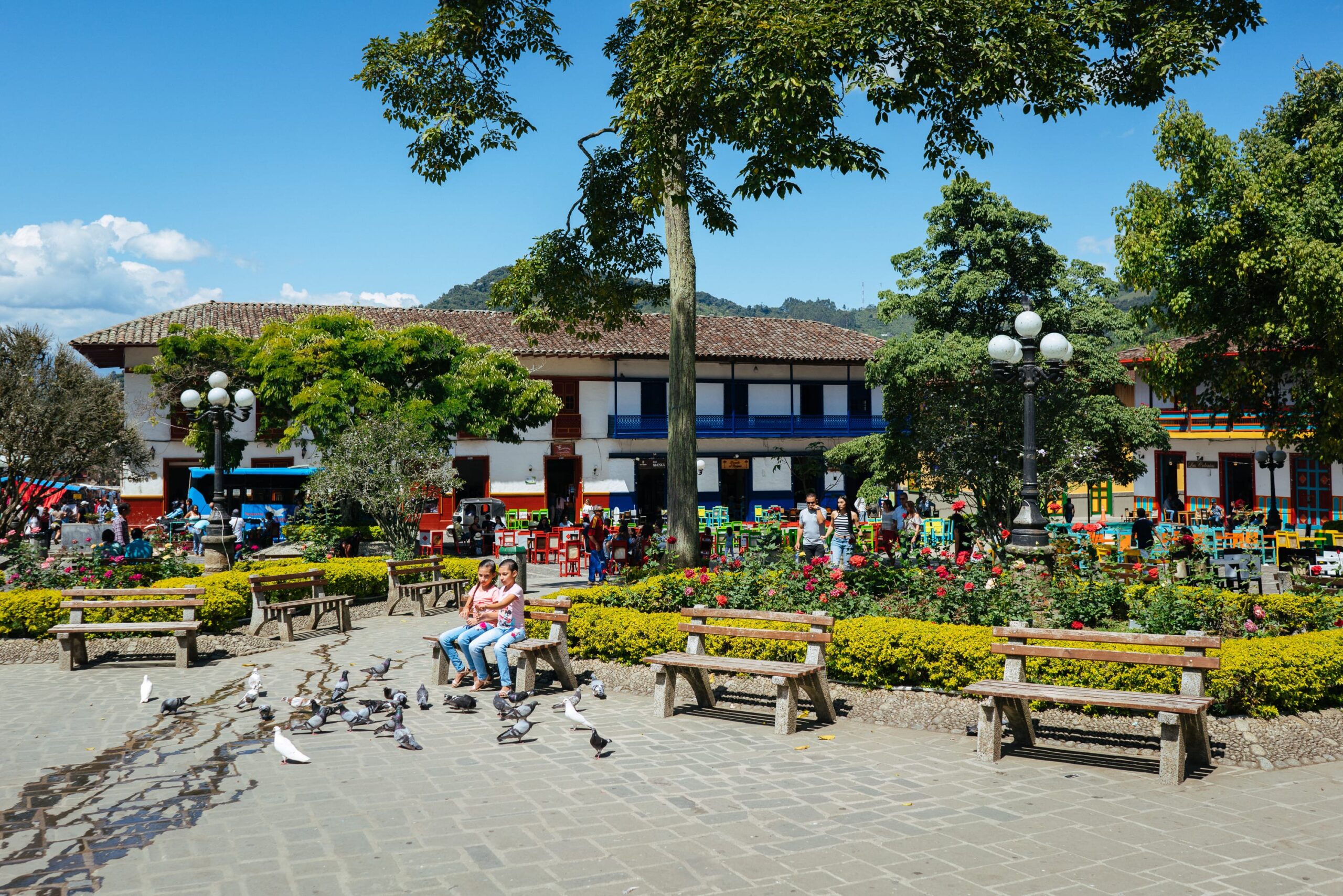
Perfect little kids, Jardin, Columbia
The Zocalo or central park of the villages was where I spent most of my time. They were always nicely painted and decorated, with a typical array of plants, a big church on one side and cafes and restaurants on the other. Jardin was a holiday town for Columbians to be proud of their culture. I bet these two little girls in perfect Columbian-holiday attire with matching pants, sandals and Mickey Mouse t-shirts just escaped their parents (or the other way around).
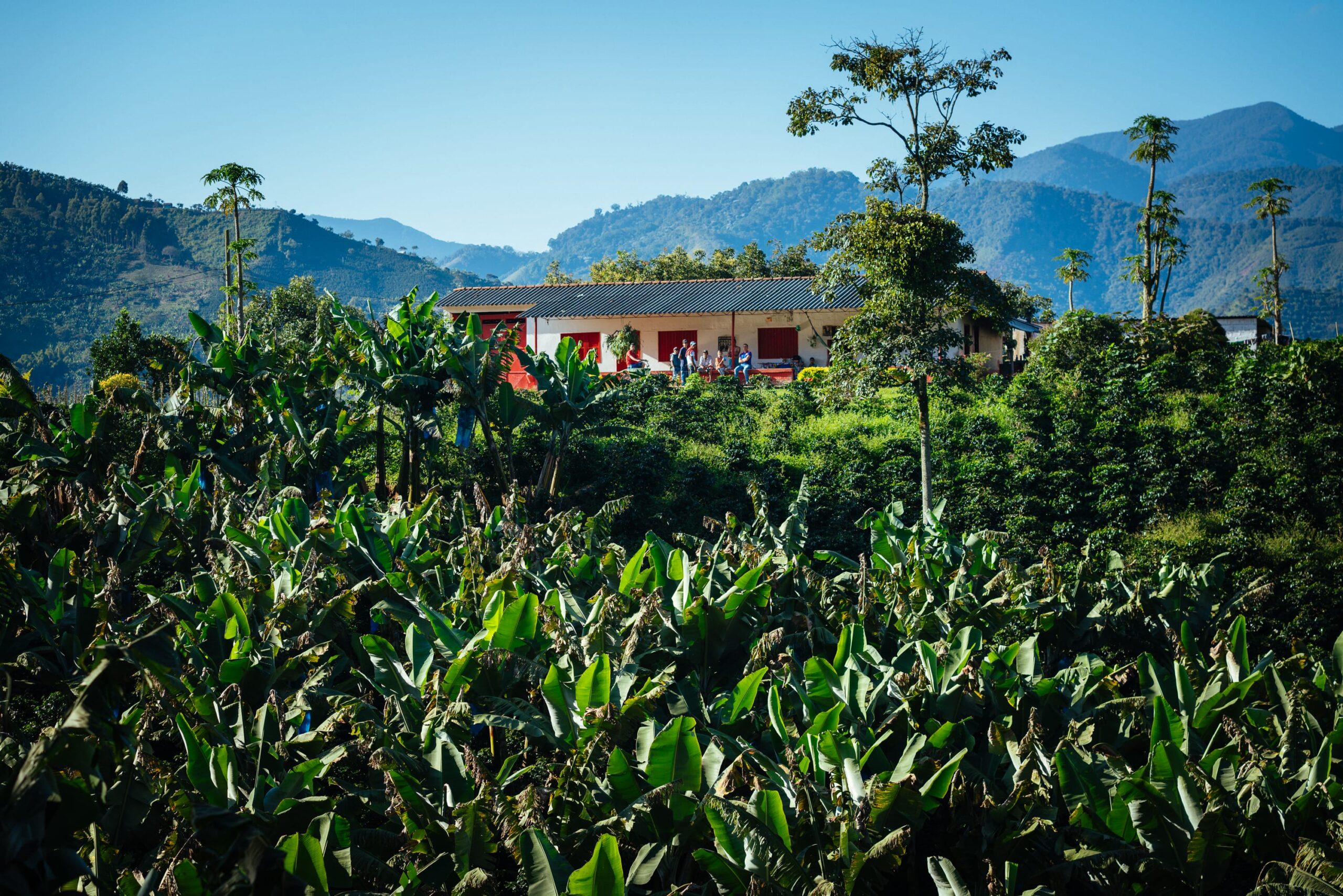
Upon reaching the Cocora valley, I wasted no time and embarked on a hike the following day. I was tired of sipping coffee in the main square of every village, and I was ready for a change of scenery. The hike was a solid experience. I began at sunrise, tracing the river’s path into the valley, heading toward the iconic tall and slender palm trees on the grassy hills. I crossed several cool hanging bridges along the way.
This was the backdoor route, taking a longer, more scenic path rather than rushing to arrive at the crack of dawn. As a result, I missed the early sun, as the hike followed the river for quite some time before gaining elevation. The mountains surrounding the valley obscured the sunrise during the hike’s early stages. The hanging bridges I crossed several times over the river looked pretty cool, so I decided to bust out my camera and mini-tripod for a few selfies. The sun was in the perfect position for some epic poses. Out of nowhere, a local farmwoman on horseback burst through the woods and bushes, herding a group of cows through the river. I found myself on the bridge, my camera somewhere down in the riverbed, and the herd in between. There wasn’t much I could do but wait and hope. The cowherd passed right by my camera, and once I managed to retrieve it, it was splattered with mud and water but miraculously unharmed – none of the cows had trampled it.
During my bus ride to my next major destination, Cali, in the southern part of Colombia, disaster struck. I developed a toothache on the opposite side of the globe, far from my local dentist in Germany (not that I had one). I hoped it would magically disappear, but no such luck; it only got worse. Once I settled into my hotel in Cali, I made the bold decision to address the issue in Colombia rather than hopping on a plane and having it fixed back home. I did my homework and discovered a dentist who appeared competent enough. To my astonishment, the practice seemed on par, if not superior, to anything I’d encountered in Germany. The team turned out to be highly skilled, with each dentist specializing in their own area, whether it was crowns, implants, or fillings. After my initial check-up, it became clear that I needed a fair amount of work done. In the end, I made about eight visits, which included several crowns and a root cleaning. I had a fantastic experience with Colombian dentistry and could wholeheartedly recommend it to anyone.
While waiting for my dental appointments, I decided to dust off my old rollerblades, which I’d purchased in Medellin, and headed to the local skatepark. I refrained from partaking in any weed-related activities because I didn’t want to risk deportation or run-ins with the police during my treatment. It was just too crucial to jeopardize. My plan was to return to Barcelona once my dental work was complete, so it made sense to get some practice sessions in beforehand.
The skatepark was situated far from the touristy part of town but turned out to be quite decent, located within a large sports complex. As always, the 35-minute ride on the metro bus was a bit sketchy, especially the first time navigating a new route. I disembarked in an unfamiliar part of town and then attempted to locate the park without a phone or Google Maps. It went surprisingly well; I’d done my homework in advance and deduced the park’s location based on the direction the metro bus came from and the size of the complex. I ended up going there multiple times and even met the local rollerblading crew one Saturday morning. They were a laid-back and friendly bunch, and we had a blast hanging out and skating. Another chance encounter involved a Russian guy on a BMX who couldn’t stop talking about his Colombian girlfriend.
I stayed at a charming family-run hostel in the heart of the tourist district. The only downside was the mosquitoes that attacked me during my working hours. The owner was a cool dude who took me to visit the skatepark and a pump track he’d helped build as part of a youth development initiative, aiming to create better opportunities in the various neighborhoods. He always brought along his wife and kids, and some friends occasionally joined us at the pump track. He was a savvy businessman and entrepreneur, constantly seeking to expand his business ventures. Salsa dancing and various traditional dances were a significant part of the local culture, cherished by both the locals and tourists in Cali. One day, he asked if I’d be up for participating in and offering constructive criticism for a salsa tour he’d organized. It was nothing too extravagant, just a museum visit, some history on the streets, and a stop at a local salsa dance bar/club. The museum was alright, rather basic, with images of famous singers I’d never heard of covering the walls. Dancing and salsa music weren’t really my thing, but I had to play the part since I was part of a paid tour. When we hit the streets, we drove to the north side of town and visited a salsa bar. It was quite the spectacle – hot, crowded, tight quarters, everyone dressed to the nines, ready to get tipsy and have a grand time. It was still daytime, but folks were downing bottles of rum and tearing up the dance floor. Some individuals were larger-than-life characters, straight out of a cartoon or a salsa movie. I’ve seldom felt as out of place as I did there many times in my life – a gringo who didn’t dance in the most authentically local salsa bar imaginable. Pretty amusing!
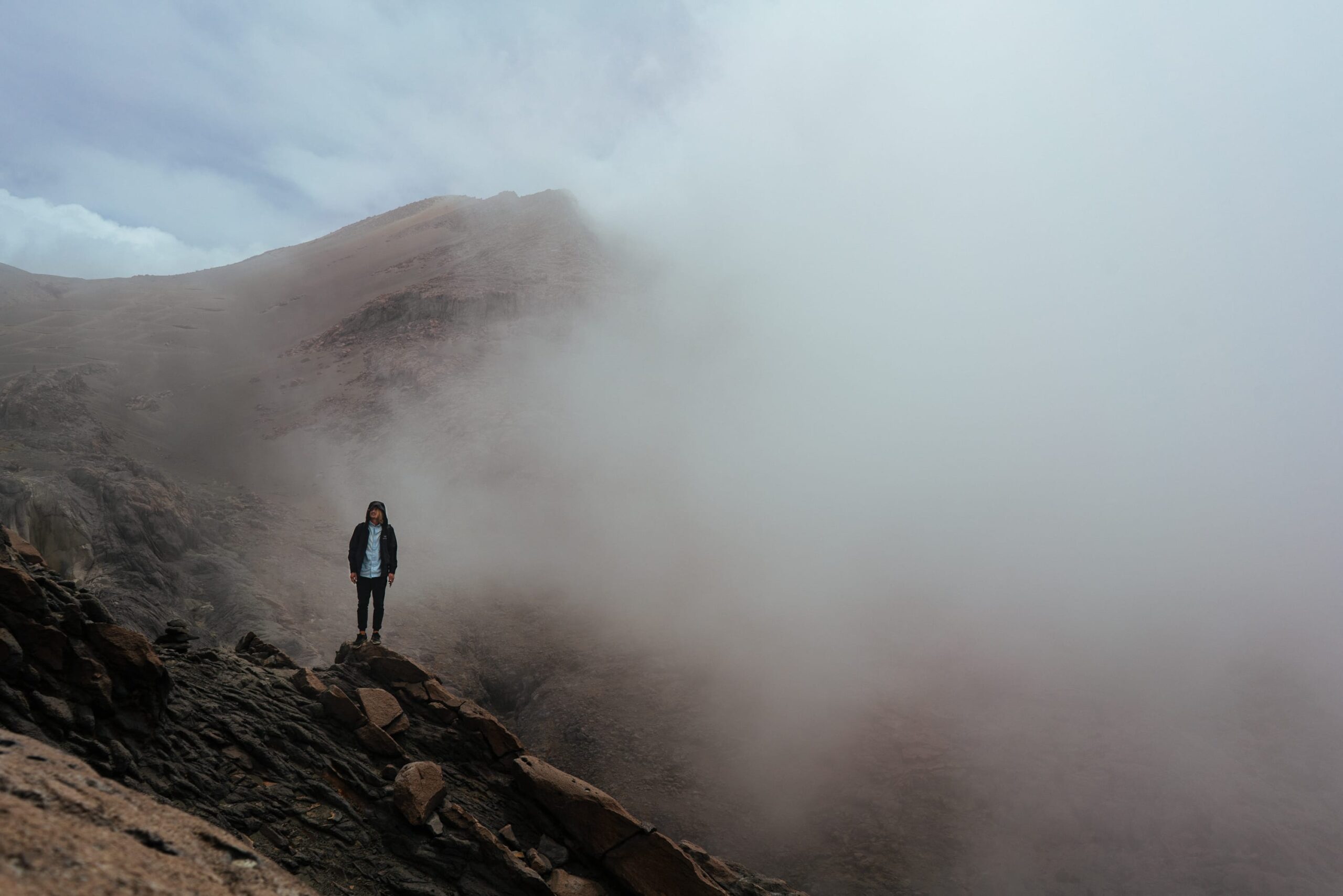
Mountain-selfie, Nevado de Toluca, Columbia
To complete my Columbian travel-experience I thought it would be important to make it to the snow or at least high up into the mountains. The Nevado de Toluca was one of the easier options, I still had to go out of my way, take a tour and even wait a couple of days in the town of Manzanillo. After all it did work out, we didn’t see any snow but it was foggy and a bit cold.
